

Welcome Aboard America's only Bilingual Boating & Yachting Lifestyle Magazine
This year marks Yachting Times Magazine’s 14th anniversary. Fourteen years of bringing you America’s only bilingual boating & yachting lifestyle magazine, an absolutely amazing voyage.
We’re very proud to have reached this milestone, and thank our wonderful staff and superb group of friends and collaborators who helped us make this dream come true. We would like to dedicate this anniversary to our loyal readers, subscribers and advertisers; thank you all for your invaluable support!
Current Issue: Autumn 2023 #46
Yachting Times is a luxury publication with a very extensive and select distribution. Please, read about it in our ADVERTISING section.
Yachting Times is dedicated to everyone that loves the sea and nautical sports, from young people competing in Olympic Classes in different Yacht Clubs, to fishermen, divers, sailors and powerboat fans, and even people that enjoy reading about far-away cruising grounds and exotic landfalls from the comfort of their own couch!
Our mission is to publish a high-quality bilingual boating magazine with diverse and interesting text content. We also aspire to raise environmental awareness among our readers and to contribute to educating boaters to operate their vessels responsibly.
Read our magazine online and show us your support by subscribing to our beautifully printed hard copy at our SUBSCRIPTION section, and receive our Yachting Times magazines from then onwards in the comfort of your home.
This is a magazine written for you all and by you all, so help us make it as interesting and thorough as you would like a boating magazine to be. We’d love to receive your feedback. Please, share your racing/cruising news with us, and send us your comments and suggestions addressed to “Letters to the Editor” at [email protected] or P.O. Box 491196, Key Biscayne, FL 33149
I sincerely hope this is the beginning of a long and wonderful voyage together.
Dolores Barciela
Editor & Publisher

80 Sunreef Power Eco catamaran

Sunseeker Ocean 182

Porto and the Douro region

Visiting Iguazu Waterfalls
Boating cartoons

Your feedback is important to us. Please, let us know your opinions and suggestions
Yachting Times Magazine
P.O. Box 491196 Key Biscayne, FL 33149 USA
1-786-237-7830
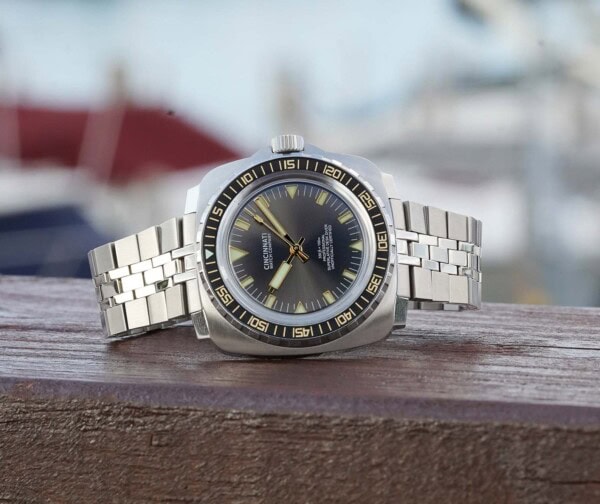
- Christopher Ward
- Grand Seiko

Yachting Timers & Watches
At worn&wound we’ve long been fascinated by watches that were designed specifically for individual sporting events. This is part of a series on these unique timepieces.
Yacht timers – also referred to as regatta timers, yachting chronographs, or sailing watches – are watches specially designed and made for the countdown to the start of a sailing race. As you can imagine, starting a race on water, with entrants powered by the wind, is not as easy as lining up on a grid, Formula 1 style, or lined up like sprinters at a track meet, waiting for the starting gun. As we just saw in the recent America’s Cup races in San Francisco, the yachts (we use the term loosely in the case of the America’s Cup boats) are already at speed as they approach the starting line. The trick for the skipper is to NOT cross the starting line before the starting gun goes off. If they do, they’re penalized quite heavily (how and how much depends on the rules in effect for the specific race).

So some sort of a count-down timer is useful to the pilot and tactician. Horns signal the start of the countdown period and a skipper can start his yacht timer by the audible signal. He then has an on board measurement of progress to the start of the race, and can sail his yacht accordingly – hopefully to reach the starting line, at speed, just as the starting gun sounds.
Over the decades there have been numerous yacht timers and specialized chronographs produced by the world’s watch companies. Perhaps the most well-known yachting timer today is the Rolex YachtMaster, but there are others, past and present. Current and recent pieces include those from Tutima, Alpina, Atlantic, Omega, Panerai, and IWC, as well as electronic offerings from TAG Heuer, Suunto, Tissot and others.
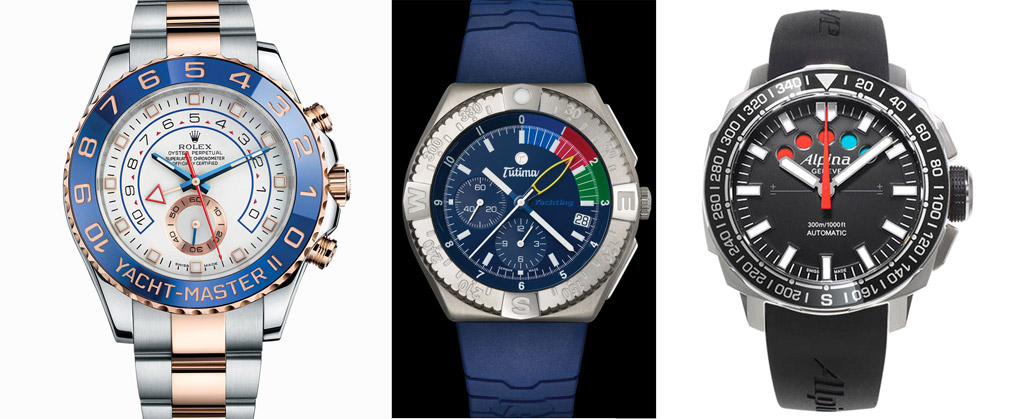
But the vintage timepieces – the regatta timers of old – are what really get our juices flowing. Sailing chronographs like the Heuer Autavia Skipper, the Regate (sold under three different brand names – Aquastar, Heuer, and Tissot), Heuer’s Yacht Timer (both wrist-mounted and stopwatch form factor), the Breitling Chronomat and SuperOcean (both in regatta timing trim), the Memosail (two are on eBay as we write this), Lemania’s self-branded Regatta Yacht Timer in handheld stopwatch format, and the wonderfully busy Wakmann.
Regatta timers have various ways of indicating the countdown time. There’s typically a multi-colored or numbered disc rotating beneath the dial with the colors or numerals showing through windows similar to a date disc. Five vari-colored dots – usually blue followed by red (Alpina, Regate), numerals against colored backgrounds (Memosail), or a separate chrono hand coupled with colored zones on the watch’s bezel (Tutima, Bretling, Heuer) or indicating time remaining to the start via a separate scale within the dial (Rolex).
Heuer’s Autavia Skipper was part of the legendary Autavia line in the 1970s. It featured the Autavia’s classic tonneau shaped case, a red, white, and blue countdown sub-dial at 3 o’clock, a small seconds at 10 o’clock, and date at 6. Chrono pushers were in the classic locations at 2 and 4, but the crown was positioned at 9 o’clock. The watch featured a 60 minute rotating bezel, and examples are often see with a blue dial & bezel combination.
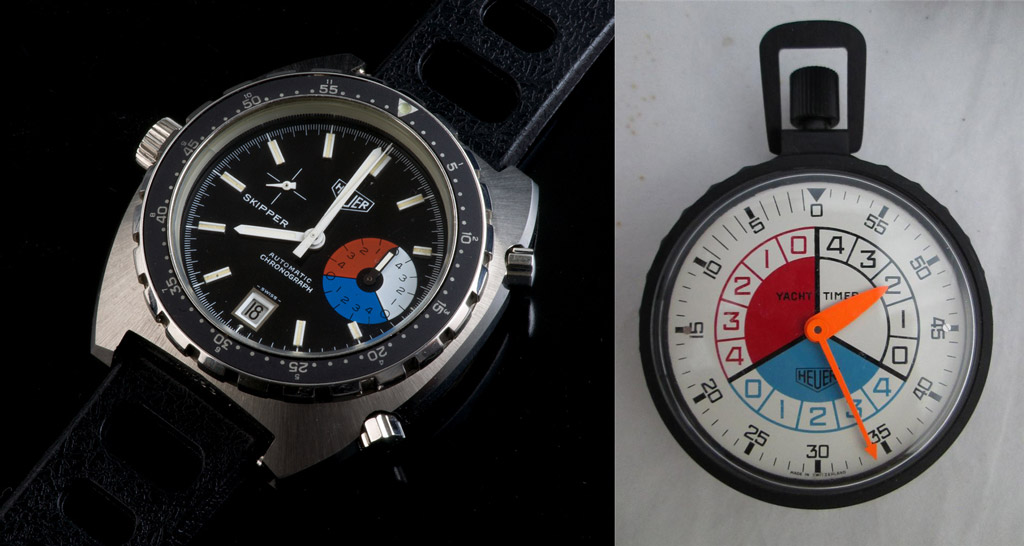
Heuer’s Yacht Timer from the 1960s came in both a wrist-mounted version and a handheld stopwatch form factor. Color-wise, regatta timer dials are never shy, and the Heuer is no exception. This watch was basically a fifteen or thirty minute stopwatch (there were at least two versions) with a multi-colored dial formatted and printed for the countdown function.
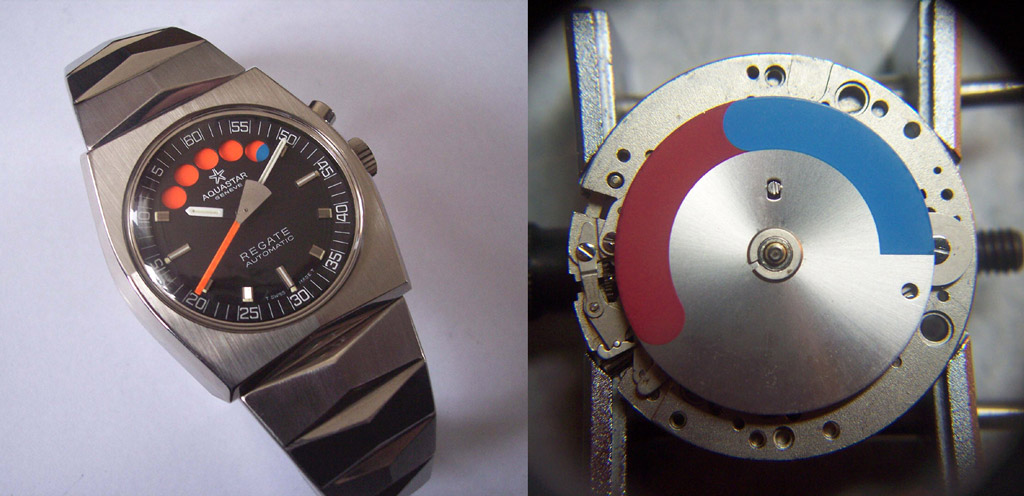
Aquastar’s Regate, also branded and sold as Heuer, Tissot and other brands such as “Racing” in the early 1980s, used a Lemania movement with a classic five-dot/ window format, with a tri-colored rotating disc beneath the dial. five windows for five minutes, and once the timing started the colored wheel would progressively show thru the windows, changing them one at a time from blue to red to white (or silver).

In the 1960s and early 1970s, Breitling produced watches in regatta timing trim in both the Chronomat and SuperOcean lines. The Chronomat featured a center mounted minute with a multi-colored inner chapter ring. The SuperOcean used the center-mounted totalizing hand with a multi-colored bezel. These black-cased watches featured Venus 178 or 188 movements, modified to handle the unique needs of a yachting chronograph.
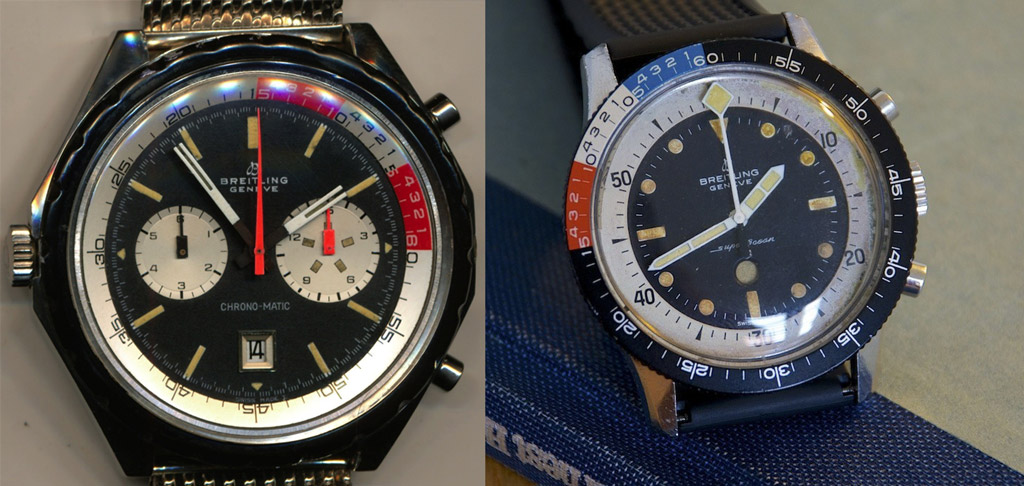
Lemania’s self-branded Regatta Yacht Timer is another handheld stopwatch format timer. The timing function is the familiar series of five windows with a colored disc beneath, but with the letters S-T-A-R-T replacing the third color (similar to the Memosail).
The Wakmann , yet another 1970s piece, looks almost too nice to have been a working watch. To us, it looks more like a dress watch for the Yacht Club awards banquet (but then, so does the current Rolex Yachtmaster II). The timer’s motor is a Lemania Caliber 1341 automatic with hour sub-dial at 6 o’clock and running seconds at 9 o’clock. Countdown chrono minutes and seconds are indicated by center mounted hands with orange tips. The display has a lot going on, with a date window at 3 o’clock, a white stationary chapter ring with days of the month, a multi-colored chapter ring with days of the week (moveable via a secondary crown at 10 o’clock – line it up with the correct day of the week for the current month), and a third multi-colored chapter ring outside the first two, this one with 15 countdown minutes in the first quadrant and a tachymeter over the following three quadrants. We’d be concerned about reading this in the heat of racing battle. That said, we love this watch for its center minutes totalizer, its unique display of day of the week and month, and it’s cool 1970s cushion styling.
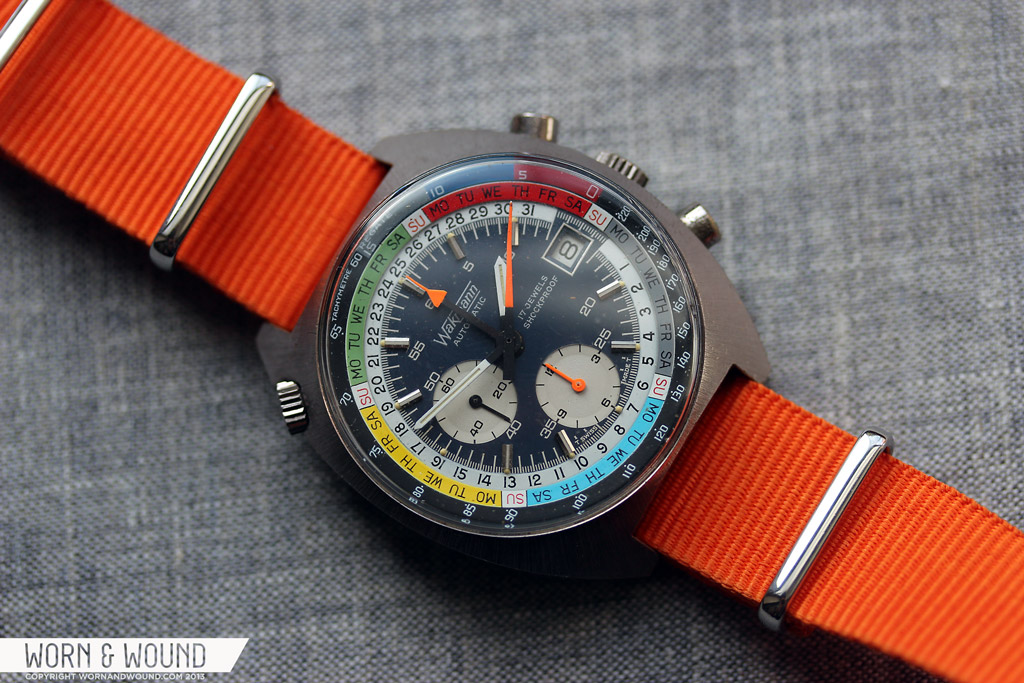
With ultra-modern quartz-based timers available (TAG Heuer produced what was effectively a dedicated smartwatch, specifically to be worn by members of the America’s Cup Team Oracle, which relayed real-time data stream of boat performance to each crew member), and the inevitably harsh conditions of sailboat racing, these wonderful vintage racers have probably seen their heyday (one can’t imagine a skipper actually wearing a Rolex Yachtmaster II in a modern race). But their unique styling, and sheer mechanical timing abilities are works of wonder in any age. We’d wear one, even if it’s only to sail our desk into next week.
by Ed Estlow
special thanks to our friends at analogshift.com for lending us the Wakmann
and Francesco B for use of his Racing Regatta images

- Information
- About the Blog
- About Worn & Wound
- Privacy Policy
- Terms of Service
- Editorial Policy
Privacy Overview
| Cookie | Duration | Description |
|---|---|---|
| cookielawinfo-checkbox-analytics | 11 months | This cookie is set by GDPR Cookie Consent plugin. The cookie is used to store the user consent for the cookies in the category "Analytics". |
| cookielawinfo-checkbox-functional | 11 months | The cookie is set by GDPR cookie consent to record the user consent for the cookies in the category "Functional". |
| cookielawinfo-checkbox-necessary | 11 months | This cookie is set by GDPR Cookie Consent plugin. The cookies is used to store the user consent for the cookies in the category "Necessary". |
| cookielawinfo-checkbox-others | 11 months | This cookie is set by GDPR Cookie Consent plugin. The cookie is used to store the user consent for the cookies in the category "Other. |
| cookielawinfo-checkbox-performance | 11 months | This cookie is set by GDPR Cookie Consent plugin. The cookie is used to store the user consent for the cookies in the category "Performance". |
| viewed_cookie_policy | 11 months | The cookie is set by the GDPR Cookie Consent plugin and is used to store whether or not user has consented to the use of cookies. It does not store any personal data. |
Yachting Monthly
- Digital edition

Singlehanded sailing for the first time
- Toby Heppell
- August 31, 2020
Toby Heppell looks at the art of singlehanded sailing and considers what constitutes good seamanship when it’s only you on board

Sailing alone gives you freedom to set off when you want, but requires a different approach. Credit: Richard Langdon/Ocean Images
Singlehanded sailing is often something we associate with feats of adventure and endurance, bringing forward ideas of the lone sailor heading off across oceans.
Setting off on a significant offshore voyage on your own is a truly specialist activity.
You are likely to experience sleep deprivation, the stresses of being alone for long periods of time and the possibility of facing inclement weather by yourself.
That may well not be for all of us.

Editor Theo Stocker headed out on his Sadler 29 to put the advice into practice. Credit: Richard Langdon/Ocean Images
But closer to home, many of us are likely to go singlehanded sailing – be it regularly or just the odd occasion, a short coastal trip or a longer voyage, or when a crew member is laid low by seasickness or other ailment.
You might end up without a crew and face the choice of leaving the boat in a distant port or taking a fair wind home alone.
You may be a couple sailing with a young child that needs constant attention, leaving the skipper to handle the boat alone.
Understanding the skills and kit necessary to successfully and safely sail by yourself is, if not an essential skill, certainly a useful string to the bow.
Freedom and responsibility of singlehanded sailing
‘Sailing solo there is the dependence on oneself that is really appealing,’ say Mervyn Wheatley, veteran of many solo ocean races and trips.

Toby Heppell got his first boat aged four and grew up sailing on the East Coast. He has been a sailing journalist for over 15 years. Credit: Richard Langdon
‘A great deal of that appeal is that you know if something goes wrong then you are going to have to sort it out yourself.
As a solo skipper, you are master of your own destiny, entirely free to run the boat exactly as you wish.
With that comes total responsibility for everything on board: food, maintenance, sail choice, pilotage – it’s all up to you.
‘There’s an unmistakable excitement in slipping the lines and knowing that success or failure is entirely down to your resourcefulness and seamanship,’ says Wheatley.
‘Completing a solo passage satisfies like nothing else. But with that responsibility comes a significant reliance on making sure everything onboard and yourself are up to the challenge.’
In this article, I’m going to look at the various aspects you should consider to make sure you’re ready for solo coastal daysails, rather than long-distance offshore singlehanded sailing, when considerations around sleep management become more vital.
Is your boat up to singlehanded sailing?
Though the recent trend has been for ever-bigger boats, you need to be fairly agile to singlehand a boat much over 35ft, or have invested some serious money into automation.
Typically at about 35ft you are reaching the point where sail size is a big factor in terms of managing reefing and winching.
Setting up your boat so that you have to leave the helm as little as possible is important.
If you do have to leave the helm when sailing, doing so on starboard tack, keeping a good lookout and setting an autopilot will keep you in control.

Clip on: Make sure your jackstays are in good condition, and let you work on deck effectively. Credit: Richard Langdon/Ocean Images
A furling headsail saves foredeck work and in-mast or in-boom furling makes mainsail reefing simpler, and the slight loss of performance may not be important to you.
A slab-reefed main can take longer to reef but lines led aft make it easier.
Crucially, if you drop it as you are coming in to harbour, the main will block your vision forward unless you have lazy jacks.
Fortunately, these are easy to add if you don’t have them already, and a stack-pack sail bag makes stowing the sail even easier.
Leaving the cockpit for any reason is among the highest risks for solo sailors, particularly as handling sails at the start and end of your passage is likely to be close to harbour with more traffic around.

Lines aft: Leading lines aft helps avoid trips forward out of the cockpit. Credit: Richard Langdon/Ocean Images
Leading lines back to the cockpit will make life easier, with the caveat that any friction points, particularly in single-line reefing systems, need addressing.
Taking the main halyard back to the cockpit at the very least is a must.
When it comes to mooring by yourself, ‘midships cleats are often underrated and underused, but they are invaluable,’ says ex-Navy navigator and cruising author Andy du Port.
‘With only two of us on board, we have become adept at lassoing pontoon cleats from amidships and hauling in reasonably firmly before the boat has a chance to start drifting off.’
In terms of safety, eliminating risk of going overboard is key and staying clipped on is a good way to do that.
Make sure your jackstays can be reached from inside the cockpit, and let you get to the mast or other working areas on deck.
Webbing rather than wire won’t roll underfoot.
Sensible cockpit strong points should let you move from helm to winches, halyards, instruments, and companionway without unclipping.
Optimal cockpit layout for singlehanded sailing
Whether you have a wheel or tiller, the layout of the cockpit is important as to whether it works well for singlehanded sailing.
It is worth noting, however, that a tiller can be slotted between your legs when hoisting sails or handling lines.
The ability to see a chartplotter on deck is important, as you will need to do much of your navigation from the helm and modern chart plotters make this easier.
Particularly in coastal waters, you will want to spend as little time as possible down below at the chart table so you can keep a proper lookout.

Navigation: A setup that works on deck reduces time spent below. Credit: Richard Langdon/Ocean Images
Effective self-steering is essential for singlehanded sailing.
An autopilot is excellent under power as the engine keeps the batteries topped up but under sail, if you haven’t trimmed correctly for a neutral helm, the autopilot has to work hard and will draw more power.
Modern units draw 2-3A but older models can draw double that.
For this reason, an easily visible battery monitor will help.
Some autopilots include a remote control you can wear on your wrist or on a lanyard to alter course.
For smaller boats or longer passages, a windvane is effective on every point of sail and draws no power.

Midships: A midships cleat is a big help if you don’t have crew to help. Credit: Richard Langdon/Ocean Images
However, they are vulnerable in port, and struggle under motor as prop wash confuses the servo blade.
‘If I am in coastal waters then I use an autopilot as it’s easier,’ says Wheatley.
‘If I’m nipping across the Channel then I know I can plug into the mains on the other side. I use a windvane on ocean passages.’
Ensure essentials such as handbearing compass, sunscreen and water are in place before you slip lines. Finally, get to know your boat well. A refresher on the key parts of each of your main systems might be a good idea before a singlehanded passage.
Physical limitations
Singlehanded sailing requires a reasonable level of physical fitness.
Every manoeuvre is slower and more arduous when sailing alone, so you’ll need the endurance to handle longer passages.
It’s really easy to become dehydrated, so keep a bottle of water in the cockpit, preferably in a pocket along with a few biscuits to keep your energy up and help you deal with tiredness.

The demands of helming, sail handling, manoeuvring, navigation and other tasks on board while singlehanded sailing should not be underestimated. Credit: Richard Langdon/Ocean Images
‘If you’re feeling a bit tired to begin with, if you’re going to sail a long way that is only going to get worse and will probably guarantee seasickness,’ explains ocean sailing legend, Pete Goss.
‘Sometimes if you just take it a bit easy at the start of a longer passage that makes things easier for the rest of the trip.
‘Plan to only go a short distance before possibly anchoring up for some hours, to make sure you get some rest and you have properly got your sea legs.
‘That can be the difference between a great solo passage and a terrible one where you are tired and sick from the off.
‘No-one functions well in that sort of condition.’

Nutrition: Keep yourself rested and fuelled. Heave to and put the kettle on for a break. Credit: Richard Langdon/Ocean Images
‘Eating is a really important thing to focus on too,’ says record breaking skipper Dee Caffari.
‘It is really just getting the balance right and realising the effect hunger has on your body and mind.
‘I did a lot of work with sports psychologists before doing big races to understand myself a lot more.
‘Much of it was focused on understanding when I am tired and when I am hungry.
‘There are moments now when I realise I just need to eat and take a 10-minute break, and then I am a totally different person.
‘Clearly not everyone has access to a psychologist, but taking the time to notice the signs of sleep deprivation and hunger and what they mean in terms of how you function is crucial.’
Solo safety
Singlehanded sailing should be approached much like sailing at night in terms of safety.
You want everything you might need ready to hand, and to take a much more cautious approach.

Make sure you can navigate from the cockpit, whether on a plotter or paper chart in a plastic wallet. Time below is time not keeping a look out. Credit: Richard Langdon/Ocean Images
Going overboard is not a good idea at the best of times and becomes even more serious when solo.
Everything should be done to minimise this risk.
While much of this is a matter of attitude, and planning each manoeuvre to predict the main dangers, having the right equipment in the right place will also help.
Navigation and communication
Being able to manage your boat, and all of the key navigation and safety systems from the cockpit is the key.
Think through your navigation and communications equipment.
A chart plotter and a VHF radio handset on deck will save the need to go below.

Shore contact: Register your vessel details with the Coastguard on the SafeTrx app, then let a shore contact know your ETA. This can also be done with the app. Credit: Richard Langdon/Ocean Images
Should you need to make a distress call, having a radio that is set up with a DSC button will make things easier.
Modern handheld VHF radios are capable of this, as are command microphones for fixed VHF sets, which also have the advantage of a longer range.
It is worth having binoculars, flares, and a grab bag easily to hand too.
AIS and radar
Making your boat more visible to others will help make up some of the potential shortfall of only having one set of eyes to keep lookout.
A properly working AIS unit, radar reflector, and potentially a radar enhancer and alarm, will help alert you to approaching vessels and you to them.
On board equipment
Though they are key bits of safety kit on any yacht, the lifebelt and danbuoy aren’t so important for singlehanded sailing, as there will be no-one left to throw them after you if you did go overboard.
But the rest of the boat’s standard equipment should be located, inspected and brought up to spec before a solo passage if they aren’t already.
These include the liferaft, fire extinguishers, bilge pump, flares, first aid kit and so on.
Man overboard
Falling overboard, serious enough with a fully-crewed boat, becomes even more unpalatable solo.
Everything should be done to avoid this possibility.
Clearly, a mindset that is consistently aware of the risk is your biggest asset, and will help you avoid doing things that could leave you exposed.

MOB: You’re most likely to fall overboard when mooring. Make sure your bathing ladder can be operated from the water or rig an emergency one. Credit: Richard Langdon/Ocean Images
Keeping clipped can serve as a reminder of this, and goes some way to keeping you connected to the boat, though being overboard on the end of the tether may be little better than being overboard without one.
‘I do wear a tether often,’ says Wheatley.
‘But the thing to remember about going over the side is that a tether does keep you there, but if you go over by yourself and you are tethered on, then you are not going to get back onboard.
‘However, it is much easier to find a boat than a body so I take the view that I wear one to make it easier for my family should I go over.’
Emergency ladder
Often the biggest risk of going overboard for a singlehander is actually in harbour.
Picking up the mooring buoy, or even stepping across from pontoon to boat has often led to an unexpected dunking.
This can rapidly become serious if you are wearing heavy clothing or the water is anything less than balmy, and do not have an easy means of climbing out.
For this reason many solo sailors carry an emergency ladder with a line that can be reached from the water.
In this scenario, a lifejacket will help you float during the initial phase of cold shock, and should therefore be worn, not just when things start to get ‘a bit lively’ out at sea.
Modern lifejackets are far more impressive than their early counterparts.
Lightweight, slimline, and comfortable to wear, the hood helps prevent secondary drowning and the bright colour and light makes it easier to locate you by day and night.
Crucially, technology has moved on so that it is possible to carry AIS and satellite distress beacons in or on the lifejacket.
Along with a VHF radio in your pocket, this is likely to be your only chance of calling for help at sea should the worst happen.
It should therefore be a serious consideration for anyone sailing solo, however far they venture.
Passage plan
As a solo sailor, it is a good idea to have a shore contact who you keep updated with your plans and your estimated time of arrival, and who knows to call the Coastguard with the details of your boat if you become overdue.

Cockpit kit: Gear close to hand should include binoculars, compass, knife and PLB, as well as grab bag, food and drink. Credit: Richard Langdon/Ocean Images
This can be supplemented by having your details up to date on the RYA SafeTrx app , which the Coastguard now uses as its leisure vessel registry, as well as being an active passage-tracking tool.
Even if the alarm is raised, hopefully a phone or VHF radio call will quickly establish all is well.
Tangled ropes
It’s easy for piles of rope to mount up when there’s no second pair of hands to help.
Keep up with tidying lines away, so you don’t end up with a tangled mess that could jam just when you need a halyard to run free.
With a little patience, singlehanded sailing is rarely more difficult than sailing two- or three-up for the experienced skipper.
Manoeuvres take longer to complete and you are likely to spend more time in the cockpit than you otherwise might, but your approach to most situations will be broadly the same.
Where things can get tricky is in slipping the lines and mooring.

Springing the stern out is fine with crew, but springing the bow out means you can handle lines without leaving the cockpit. Credit: Richard Langdon/Ocean Images
The latter being all the worse for coming at the end of your passage and so your decision making is likely to be impaired through weariness.
Slipping the lines is clearly much easier if the wind is blowing you off the pontoon.
Here your midships cleat will come in handy as you can get yourself tight to the pontoon with this and then drop the bow line, before heading back to remove the stern line and finally slipping the midships line.
Do remember to have plenty of fenders fore and aft as the boat may pivot around the midships cleat, depending on wind and tide direction.

Multi-tasking: Tiller boats can be steered with your knees while coiling lines, but don’t get distracted. Credit: Richard Langdon/Ocean Images
As ever, the process for leaving a windward berth can be trickier.
It is easier to spring off the bow first as you have cockpit access to your sternline.
So this is your best option if there is little to no tide, or the tide is coming from ahead.
If there is no tide running and the wind is blowing to onto your pontoon, then you will probably need to motor astern with the stern line firm to help bring the bow out.

Midships cleat: If you can get a midships line on, it will hold the boat to the pontoon while you sort the other lines. Credit: Richard Langdon/Ocean Images
Once it moves clear of the pontoon you can motor ahead as you slip the sternline.
With the tide from astern, use a slipped bow spring.
With sufficient tide the engine does not have to be engaged; simply slip all the lines bar the bow spring, go to the foredeck, watch the stern come away from the pontoon, slip the spring and return to the cockpit.
Once you are in open water, set the engine slow ahead and engage the autopilot while you recover lines and fenders.
Lines can be coiled and fenders tidied away in the cockpit.
On the water
Before taking on any planned singlehanded sailing, your boat handling should be up to scratch, but even the best sailors will find their skills improving quickly from a bit of time on the water alone.
Thinking through manoeuvring into and out of marinas berths and moorings, and then practising this a few times can take away some of the stress of a solo trip.

Heaving to: Lash the helm and back the jib to give yourself a break, but get the boat balanced first. Credit: Richard Langdon/Ocean Images
At sea you need to be able to heave-to or stop comfortably, as this will give you time to boil the kettle, tend to any problems, or even have a quick break.
Manoeuvres such as tacking or reefing can also be rehearsed: which lines are eased or hauled in first, and when to put the helm down will be particular to your boat, but can be practised.
Once you’re at sea, it is worth keeping manoeuvres to a minimum when possible, as they take time and energy, and incur an element of risk.
As beating will involve a heeled boat and some tacking, it is, by its very nature, the toughest point of sail.
Self-steering
Vane steering systems or an autopilot that can adjust the course to the wind shifts, will keep the boat steering effectively.
Some newer autopilots also have tacking and gybing functions, leaving you free to concentrate on trimming the sails.

An autopilot or self-steering is vital. Credit: Richard Langdon/Ocean Images
An autopilot remote is also an option, giving you access to control from anywhere on the boat (usually worn on the wrist).
It’s also worth spending time on your passage planning and general theory.
Going below for five minutes to check when the tide turns or to find out what a specific light means will be five minutes that you’re not on deck keeping a lookout.
When coming in to harbour, start the engine relatively far out from your destination to give you time to douse sail and prepare yourself.
Lazyjacks prevent a dropped mainsail blowing off the boom and restricting visibility forward.
Rig your fenders and lines in open water where you have space to drift or motor slowly under autopilot.
If you do not yet know where you will be going it is well worth fendering port and starboard with stern and midships lines on both sides.

Rig fenders and lines once you’re out of the waves, but before you enter confined waters. Credit: Richard Langdon/Ocean Images
Most marinas will send someone to help you if you radio ahead and let them know that you are on your own, or others on the pontoon will normally be happy to catch a line, but you should be prepared to do things alone if needed.
Coming alongside a pontoon, the midships line is critical.
Position the tail so that it is easily picked up when you move forward from the helm.
Prepare bow and stern lines and bring the ends amidships so you can reach them from the pontoon.

Boat handling: Without someone to take the lines ashore, being able to get your boat stopped where you want it makes life much easier. Credit: Richard Langdon/Ocean Images
Stop the boat dead with your midships cleat as close as possible to your selected pontoon cleat, and throw a lasso of rope over it – a skill well worth practising.
Sweat the line to bring the boat as close as you can.
You are then secure and have more time to take bow and stern lines across and adjust your position.
You can also use the midships line as a spring.

Stern line: Throw a coil of line from each hand to lasso a cleat at the stern. Credit: Richard Langdon/Ocean Images
Once the line is made off, put the engine ahead with the helm towards the pontoon.
This will hold the boat snug alongside while you sort the other lines.

Lazy jacks: When dropping the main, lazyjacks help prevent the sail blocking the view and let you delay a trip on deck. Credit: Richard Langdon/Ocean Images
This is harder if the wind is blowing off the pontoon; your boat handling has to be positive and accurate.
If coming alongside isn’t working, getting a line onto a cleat from the bow or stern will get you secure and give you time to warp the boat in.

Which line first? If the wind is offshore, the midships line is useful to get on first. Credit: Richard Langdon/Ocean Images
If you don’t fancy it, consider picking up a swinging mooring or dropping the anchor until help is available or the conditions change.
The key to mooring alone is to be ready beforehand, in open water, and to have planned what order you will do things in.

Midships spring: Helm to the pontoon and forward gear will hold you alongside. Credit: Richard Langdon/Ocean Images
This can be practised while you have crew by getting the boat to stop in her berth without relying on lines to take the boat’s way off.
It looks much better too!
Don’t get overpowered
Managing the amount of sail you have set before you become overpowered is more important when you are singlehanded sailing as it takes longer to reduce sail and you will have no extra pairs of hands if things get exciting.
If you know it’s going to be a windy sail, reef before you leave your mooring.
If you have a ramshorn for the tack reefing point, you may need a small piece of bungee to hold the cringle in place until you have hoisted the sail.

Reef earlier than you would with crew. It’ll save energy, reduce risk and reflect a more conservative approach. Credit: Richard Langdon/Ocean Images
If you are already out on the water, reef early, before the wind increases too much.
Be conservative with how early you reef.
Before you tackle reefing the mainsail, furl away some of the headsail.
This will slow the boat, making the motion easier and reducing heel, so making reefing the main easier.
Having a more heavily reefed main, and using the genoa to fine-tune the sailing area with the furling line also makes changing gears singlehanded less arduous and avoids trips on deck before needing to shake out or take in the next reef.

Going forward to the mast, make sure you are clipped on. Credit: Richard Langdon/Ocean Images
‘For short-handed crews, mainsails need to be quick to drop in an emergency and require no feeding when hoisting, to avoid unnecessary trips out of the cockpit,’ says Pip Hare .
‘Avoid using a main with a bolt rope, because when the sail is dropped it will not remain captive at the mast and can quickly become uncontrollable.’
Downwind, keeping the rig under control requires some forethought.
A main boom preventer should be used if you’re sailing deep downwind, but is precarious to rig at sea, so have this ready before you set off, or even rig one on each side.
Most singlehanders are likely to be reluctant to set coloured sails off the wind in all but the best conditions and using a headsail, poled out, is more likely.

Keep rope tails tidy when singlehanded sailing to prevent a dangerous tangle in the cockpit. Credit: Richard Langdon/Ocean Images
To set your poled-out headsail, begin by furling it away while you ready a pole on the windward side with uphaul, downhaul and guy.
This will give you full control of the sail from the cockpit.
Once you are set up it is simply a case of unfurling the sail and trimming from the helm.
It’s an easy and easily manageable solution and can be furled away without dropping the pole.

If your reefing system has ramshorns, a piece of bungee can hold it in place while you go aft. Credit: Richard Langdon/Ocean Images
It will be easiest to furl the sail before you gybe, then attend to changing over the pole before again unfurling.
Setting a spinnaker or cruising chute is a more long-winded process solo so should only be taken on if you have a long leg ahead of you and you are sailing in relatively traffic-free waters.
A cruising chute is simpler to set up than a spinnaker.
Rigging can be done with the headsail furled and hoisted in its snuffer.
You’ll probably need to be on the foredeck to raise the snuffer, so make sure you are secure before doing so.
Continues below…

Jeanne Socrates: 77 & solo non-stop around the world
Jeanne Socrates battled equipment failure during her record circumnavigation. She tells Katy Stickland how she overcame adversity

Storm tactics from the Golden Globe Race: Mark Slats
Golden Globe Race skippers share their experiences of ocean storms, providing lessons for all of us about how to cope…

Manoeuvre under sail: getting home without an engine
We’re used to relying on our engines, but could you get home without one? James Stevens shows how it’s done…
Set the boat on a course deep downwind until you can get back to the cockpit to trim the sail.
Hoisting a spinnaker takes more planning and more time both to set and douse.
For gybing either of them, you would be best to snuff or drop the sail and reset on the new side.
Singlehanded sailing checklist
- Boat well maintained with all known faults rectified
- Sail handling arrangement set up with lines back to cockpit if possible
- Autopilot or self-steering set up, calibrated and working, with remote if available
- Hove-to practised and balanced sail plan checked
- Furling headsail and mainsail lazyjacks set up and working
- Enough fenders and mooring lines to rig both sides, and means of getting midships line onto a pontoon cleat
- Confident you can handle the boat for the given forecast
- Practised mooring, manoeuvring and sail handling alone
- Well rested ahead of passage
- Food and drink prepared in advance and available on deck
- Familiar with boat’s key systems and how to troubleshoot each of them
- Short passages and daysailing in coastal waters are better
- Avoid overnight passages initially
- Full passage plan completed with necessary notes available on deck
- Passage plan and ETA shared with shore contact, coastguard or RYA SafeTrx app
- Boat details registered on RYA SafeTrx app or website
Safety and kit
- Adopt conservative approach to risk and safety
- VHF radio on deck
- Chartplotter or paper chart on deck
- Wearing lifejacket at all times, particularly start and end of passage recommended
- Carry personal safety equipment, including VHF, knife, torch, and PLB or AIS beacon
- Jackstays rigged, tether clipped on
- Emergency ladder in reach from water
- Have easily available: wet weather gear, binoculars, handbearing compass, knife, sunscreen, snacks, and water.
For all the latest from the sailing world, follow our social media channels Facebook, Twitter and Instagram .
Have you thought about taking out a subscription to Yachting Monthly magazine?
Subscriptions are available in both print and digital editions through our official online shop Magazines Direct and all postage and delivery costs are included.
- Yachting Monthly is packed with all the information you need to help you get the most from your time on the water.
- Take your seamanship to the next level with tips, advice and skills from our expert skippers and sailors
- Impartial in-depth reviews of the latest yachts and equipment will ensure you buy the best whatever your budget
- If you are looking to cruise away with friends Yachting Monthly will give you plenty of ideas of where to sail and anchor
- Mar 2, 2023
The History of Yachting: From Ancient Times to the Modern Era
Yachting is a popular and luxurious activity enjoyed by many around the world. The history of yachting dates back to ancient times, and over the centuries, it has evolved into the modern-day sport and pastime that we know today. In this article, we will take a closer look at the history of yachting and how it has evolved over the years.
Ancient Times
Yachting can be traced back to ancient times, where it was primarily used for transportation and fishing. The ancient Egyptians and Phoenicians used small boats to transport goods, while the Greeks and Romans used larger ships for naval battles and exploration. The Vikings also used boats to travel and explore new lands.
16th and 17th Centuries
During the 16th and 17th centuries, yachting began to emerge as a recreational activity for the wealthy. The first recorded yacht race took place in England in 1661, where King Charles II raced his yacht against the Duke of York. Yachts during this time were small and were typically used for short pleasure cruises.
18th and 19th Centuries
In the 18th and 19th centuries, yachting became more popular, and yachts began to evolve into larger and more luxurious vessels. During this time, the America's Cup was established, which is still one of the most prestigious yachting races in the world. Yachts during this time were often used by royalty and the wealthy for leisurely cruises, and yacht clubs began to emerge as social clubs for yachting enthusiasts.
20th Century and Modern Era
In the 20th century, yachting continued to grow in popularity, and yachts became even more advanced and luxurious. The development of new materials, such as fiberglass and carbon fiber, revolutionized yacht design, making yachts faster and more comfortable. Today, yachting is a multi-billion dollar industry, with yachts ranging from small sailboats to massive mega yachts that can cost hundreds of millions of dollars.
Yachting has also become more accessible to the general public, with yacht charters and rentals available in many popular yachting destinations. Yachting is no longer limited to the wealthy and has become a popular pastime for people from all walks of life.
In conclusion, yachting has a rich history that dates back to ancient times. From transportation and fishing to recreation and leisure, yachting has evolved into the modern-day sport and pastime that we know today. With its luxurious vessels and breathtaking destinations, yachting continues to capture the hearts of people around the world.
- TBZ Daily Skipper's Blog
Recent Posts
Your Guide to Finding the Perfect Boat at a Boat Show
If you're new to boating, stepping into a boat show can be an exhilarating experience. The glittering vessels of all shapes and sizes, the smell of the sea, and the promise of adventures on the water
Boating Accidents: causes and how to avoid them!
Boating is a fun and exciting activity that many people enjoy. Whether you're out on the lake for a leisurely afternoon or cruising along the coast, there are certain safety precautions you should tak
Anchoring in Windy Conditions
As a seasoned boater, you know that anchoring your yacht properly is essential to keeping your vessel secure and avoiding any unnecessary damages. However, when you encounter windy conditions, anchori
- First time on a sailboat: 10 things you need to know before you depart
Has someone invited you to spend a sailing holiday with them? Congratulations! You are guaranteed an unforgettable experience. But what exactly should you expect from your first ever sailing trip? How should you prepare for it and conduct yourself on board so that you won't be the "rookie"? Check out our tips and advice from experienced sailors.
An elegant lady with a wide-brimmed hat, high-heeled shoes and a huge suitcase packed full of clothes — every captain's worst nightmare. Be aware that shoes like this should remain firmly on the wharf, as should the suitcase along with most of its contents.
1. Packing for a sailing holiday
If you've ever spent a holiday in a caravan or campervan, you'll already have a good idea of what it's like to be short of storage space. Just like with a motorhome, designers are incredibly creative when designing the interior of a sailboat, so there are quite a few different lockers and storage spaces on board. You'll come across storage spaces almost everywhere and chances are you won't discover them all during your stay. A lot of these spaces tend to be harder to access (such as, under beds or salon sofas) making them more suited for storing less frequently used items. You'll probably be allocated a small locker in a not-so-spacious cabin for your personal belongings, so you should choose carefully what to pack and how. The best is to pack your things in a fabric bag that's easy to stow . Generally, on a boat, you unpack your clothes and stow the bag under your bed for the rest of your trip. As there may be part of the engine or a water tank occupying part of the storage compartment, a suitcase just wouldn't fit.
So what exactly to pack? Below you will find a basic checklist for a summer yachting vacation. If your skipper is planning a voyage in the Baltic or the UK, they can advise you on what else to add.
YACHTING.COM TIP: Don't shell out on sailing apparel for a single sailing trip. For one thing, it's often expensive and, more importantly, the clothing is generally designed for professionals or enthusiasts who can take full advantage of its features, especially in harsher conditions. However, if you do get hooked on sailing, you'll need to invest in some quality gear. Take a look at our guide — How to choose sailing clothing: what to wear .
Clothing and footwear you'll need on board a boat
- Lightweight long trousers.
- Fleece jacket, sweatshirt or sweater as it can get cold at night.
- Shoes for dry land: sandals or walking boots if you are going to do some hiking.
- Flip-flops or crocs, especially when visiting the bathroom.
- White-soled canvas shoes for getting around on board, but you can also go barefoot.
- Water shoes if you are going to an area where sea urchins are found.
- Underwear and socks.
- T-shirts and tank tops.
- Swimwear or bikinis, although skinny dipping is always an option in deserted bays (if the crew agree).
- Nightclothes – this depends on where and when you are going. In most popular sailing destinations you will be warm in your cabin at night and a light T-shirt will be fine, but towards the end or beginning of the season the nights can get a bit chilly and you'll appreciate a good pair of warm pyjamas.
- Headgear to protect against the sun is essential – cap, scarf etc.
- Women, be sure to pack at least one lightweight dress for dinner at a restaurant.
- Lightweight clothing to protect your legs and arms from the sun – especially useful when sailing in the Caribbean , but appreciated anywhere you're at risk of sunburn. I've come to love a lightweight, long-sleeved cotton shirt that I can throw over my swimsuit if needed and have my back, shoulders and arms covered.
- Waterproof windbreaker – you might not even put it on, but it's good to have.
- Gilet/lightweight body warmer in case of colder weather.
- If you're planning to use your hands while sailing, sailing gloves will come in handy, but cycling gloves or regular work gloves that you've cut the fingers off will do.
Cosmetics: don't expect a big bathroom
We recommend packing everything you need into a cosmetic bag that you can then quickly take with you whenever you visit the bathroom.
- Sunscreen, preferably biodegradable. It's best not to take oil that someone might slip on, and avoid spray tan, which sprays all over the place and can leave unsightly greasy droplets all over the deck.
- After-sun cream or gel and something to treat sunburn.
- Lip balm/salve.
- Shower gel, shampoo and conditioner in smaller containers – again, prefer biodegradable.
- Insect repellent.
- Laundry bag.
- Toothbrush and toothpaste.
- Nail clippers (if flying to your destination).
- 2 quick-drying towels.
- Clothes pegs.
- Earplugs – they will help in case of a snoring roommate and travelling overnight using engine power.
Essential medicines
Every boat should have a first aid kit, but it's better to have your own medication.
- Paracetamol.
- Activated charcoal – used not only for diarrhoea but also as a precaution in case of ingesting poison.
- Medicines for diarrhoea.
- Nose drops.
- Cough lozenges.
- Some tried and tested hangover cures (e.g. Alka-seltzer).
- Medicine for seasickness.
- Antihistamine cream – not only works for insect bites, but can also be used for light burns whether from the sun or otherwise
- Antihistamine drops – pack drops in addition to the cream, as they work well for sun rash.
- Effervescent multivitamin – it also adds a nice flavour to the water.
- Disinfectant – I personally recommend Alfasilver spray, which does not soak the wound and aids healing.
- Plasters and bandages.
Other essentials or recommended items
- Sunglasses – you definitely can't do without them, the sun is very harsh on board. Pack two pairs.
- Lanyard for your glasses – especially if you wear dioptric ones or your sunglasses cost a fortune. One look in the water and you'll be squinting for the rest of your holiday.
- Headlamp or torch.
- Dry bag, a smaller waterproof case for your belongings, will come in handy if you're swimming or paddleboarding to the beach.
- Stowable backpack for trips ashore or a canvas bag for shopping and bathroom trips.
- Light reading material (you don't usually get to read much on a boat and Nietzsche would take up half your suitcase).
- Music on your smartphone or flash drive – some boats have an older radio with a USB input. Your own portable speaker may also come in handy.
- Charger for your smartphone and other gadgets. Leave your more expensive devices at home, the salty environment is not good for electronics.
- Fully-charged power bank.
- Snorkel and diving goggles.
- Inflatable mattress, paddleboard etc. (if the captain agrees).
2. Yachting etiquette: how to conduct yourself on board
Observing certain rules of courtesy and simple consideration can prevent the most common illness on a boat: cabin fever . As the saying goes, you will all be " in the same boat ". Some of the advice below may seem obvious, but surprisingly there are people who are completely unaware of how they should behave on a sailboat.
The first thing to remember is that a boat is not a hotel and your cabin is not a hotel room. Staying on a boat is more like a comfortable camping experience. Cabins are usually not soundproof, so it's quite possible that whatever you say or do in your cabin others will know about it (yes, we're talking about making love too).
Common areas like the saloon or cockpit are used by everyone, so it's a good idea to be considerate and keep them tidy. There really isn't much room for individualism but that also doesn't mean you have to socialize at all costs. If you're an introvert who likes to sit on the bow with a book and appreciates a bit of solitude, no one will mind. After all, sailing is about relaxation and rest. It's more a matter of not bothering others with your behaviour and being considerate.
YACHTING.COM TIP: If you are interested in more in-depth information about etiquette on board and in the harbour, read our complete guide to Yachting Etiquette from A to Z .
The captain will certainly set some rules of their own, such as galley duty (who's in charge of washing dishes and cooking — usually crew members eat together and take turns doing duty) or pooling your money . It is common practice for stocking up the boat and other bulk expenses (such as diesel or marina stays) to be paid out of a common budget, which you put in to as needed. So ask the captain in advance to ensure you have enough cash with you. In any case, remember that what is bought from the common budget belongs to everyone . It's a good idea to ask the others before you polish off a whole packet of cookies unless you want to be dropped off on a deserted island.
3. Managing water supplies
Being considerate on board also applies to water consumption . Unless you have a boat with a desalination system (which charter boats usually don't) the freshwater capacity is limited. There are usually one or two freshwater tanks that are filled up before sailing and can be refilled at marinas along the way. However, it does depend on your travel plans. It's also quite possible that you'll have to make do with the water you took in before departure for the rest of your stay. And if you waste it, you may be in for a keelhauling — the ultimate pirate punishment . So only shower if you really have to. After a dip in the sea, just rinse your hair and face, salt water is healthy and you'll get used to it. And even when washing the dishes be careful . Most boats have a saltwater pump in the galley, where you wash the dishes before rinsing them with fresh water. Those who really want to conserve water even cook in seawater (pasta water has to be salted anyway). In other cases, of course, use water from the tank, including making coffee and tea for breakfast. But if you want to avoid an upset stomach, it's best not to drink unboiled tank water and use bottled water instead.
YACHTING.COM TIP: Managing the eating arrangements on a boat can be quite a challenge, especially if the crew have differing needs. This means it's always best to plan how the meals are going to be sorted out on your sailing trip in advance — what you'll take with you, where you'll shop, and who’ll actually be feeding those hungry mouths on board. Take a look at our guide, Food for sailing: how to manage meals on board , for advice and potential pitfalls.
4. Moving around on board
The deck is often wooden and at risk of getting scratched. Therefore, it is usual to walk barefoot or in lightweight deck shoes designed specifically for this purpose (to avoid getting sand or pebbles on the deck, do not wear these shoes on shore). The shoes should also have white soles so they don't leave marks. Plain canvas ones are ideal.
We move around the boat with caution, especially when sailing. The interior is usually equipped with various handrails to hold on to. However, these are designed to provide stability, not to hang on to, especially if you're a larger person. Use extra caution when moving around on deck and do not run . It's always a good idea to be holding on to something — whether it's railings or the shrouds (metal cables securing the mast). Remember, never climb on the hatches or windows as they could easily break. If you're on a charter boat and don't have deposit insurance, you'd lose a fair amount of money.
Have a look at more handy sailing tips:
5. be careful when getting off the boat.
There are several ways to get off a boat, but it depends on how the boat is moored. The most common and inconvenient way is when the boat is moored stern to the pier. Either the distance is so small that it just takes a single step from the stern and you are safely ashore, or a gangplank (passerelle) must be placed between the stern and the pier to bridge the gap. Particularly if there are waves, this plank can be somewhat unstable, so again, caution is in order. If in doubt, there is no shame in asking someone to give you a hand.
The second most common way is to get off from the side of the boat . The railing tends to open on the side, but sometimes you'll need to step over it. Keep your hands free, give all your belongings to someone else or throw them on the pier, and hold on to railings, posts or shrouds as you disembark. Depending on the height of the boat and the distance to the pier, the captain will either place a ladder or a step fender (a fender designed to be stepped on) on the side, or you can step right off the boat onto the pier. However, always step on the edge after stepping over the railing and don't try to reach the ground in one go. Hanging off the side of the boat with the railing cutting into your crotch isn't the best way to discover your legs are shorter than you thought. If the tip of the boat is facing the pier, the same procedure applies, except that there will be no opening in the railing.
Occasionally, if there is not enough room in the marina, you will be moored to another boat and go ashore over its deck. In this case, follow the same procedure as when disembarking from the side. You should inform the other boat's crew of your intention to board their boat, but it is usually fine if you don't. When you are moored to another vessel (presumably with its consent) it is understood that you will be leaving your boat over their deck. Never walk on someone else's boat with your shoes on , and if possible, walk over the tip to respect the privacy of the other crew. Try to be quiet as they may just be taking an afternoon siesta in the cabin below you.
6. Safety is crucial when sailing
After reading this section you may think that death lurks at virtually every turn but this is not the case. Fortunately, serious accidents at sea are very much the exception and are usually the result of inexperience or underestimation. It's all about being aware of the risks and behaving accordingly. Paradoxically, it is often the situations that look the most dramatic (such as heeling or water splashing on the deck) that are not dangerous at all, whereas a trivial run into the marina in the sunshine with light winds can be fraught with danger. The important thing is always to listen to the skipper as they know what they are doing and why. Otherwise, sailing is all about relaxation, sunbathing, the wind in your hair, beautiful locations and unique experiences.
A proper captain should give you safety training before setting sail: explaining where life jackets are located (each boat must be equipped with an amount corresponding to its capacity or the number of crew members), how they are used, and where to find other life-saving equipment — flares, a lifebuoy, liferaft... You should also know what to do when there is a man overboard (MOB) (every captain's nightmare).
Beware of the lines and boom when manoeuvring the boat
Every sailing trip is potentially dangerous. A sailboat is full of various lines with incredible pulling power and a flying boom (the pole perpendicular to the mast where the mainsail is attached) can easily knock you off the boat . So be careful where you sit or climb, what's under your feet (such as, whether you're standing on a line) and what's above your head. Be especially vigilant when tacking. This is when a boat sailing into a crosswind changes direction and the sails fly from one side to the other . This can be done either upwind or downwind with the latter, called gybing, being more dangerous, harder to control, and involving more force in the sails. But an experienced skipper can manage it without too much trouble. What's important to know is that once the helmsman announces a tack, something is going to happen. If you aren't helping, don't stand, don't walk around the boat, just make sure your mug of hot coffee is in the sink or in a holder (never on the table) and sit down so that you are not in the way of the boom or any of the lines.
It's a good idea to be aware of the dangers of fire on board. Ideally do not smoke on board and to take all safety precautions when cooking (take a look at our article — Fire on board and how to prevent it ).
Chosen a sailing destination yet?
7. alcohol on board... to drink or not to drink.
Sailors have always been partial to a drink . And a holiday without the odd beer or glass of wine is almost unthinkable. However, t he captain of a sailboat, just like a driver, should avoid alcohol altogether even when the ship is at anchor. They never know when they'll have to leave in a hurry if conditions change. As for the crew, opinions and legislation vary from country to country, but what the captain tells you is crucial. They are the ones who will suffer the consequences if something happens to you, so it is up to them what to allow. But be aware that the boat is not a pub, and even if you're not under sail, don't forget safety. Ironically, most drinking accidents happen in marinas. This is where the crew feel safe and they'll have a few drinks in a local bar or restaurant. But it takes just one misstep when boarding to end up in the water. If you hit your head in the process, it might not end well.
Know that even if the captain is a fun laid-back guy who won't spoil your fun, they are still responsible for the crew and the boat. If there are any problems, they'll be the one who has to sort it out. So it's up to them to keep order on board and avoid any dangerous situations. Don't be angry with them for ordering you around or forbidding something, and always listen to them. Whatever the captain says goes : they are who is responsible, and also the one who makes the decisions on board. Think what you want, but don't argue. Just follow orders. Mutiny on a ship is punishable by death.
8. Heeling looks scary but isn't dangerous
The most beautiful shots of sailboats are with stretched sails, water splintering off the bow and heeling nicely (leaning to one side). Sailing is all about physics, and it's not worth going into much detail to explain why a boat doesn't sink or capsize . Just know that both are virtually impossible. For the boat to sink, there would have to be a massive leak (automatic pumps can handle minor leaks) or some serious fault or accident.
What prevents the boat from capsizing is the keel (part of the hull of the sailboat underwater that acts as a counterweight to the pressure exerted on the vessel by the wind). By definition, therefore, motor boats do not need one, and there are sailboats (usually smaller sporty boats) without one too. These can capsize, but a boat with a keel cannot. However, in good wind conditions, your boat can be at a large angle of heel and quite possibly the skipper will be doing it on purpose for a bit of fun. Don't panic. You may look a bit like unsecured cups on a shelf or occasionally be walking on the wall instead of the floor... but this is completely normal on a sailboat . A large angle of list is not advantageous in terms of sailing efficiency, so it is not the goal to sail with such. If you have a crosswind, the boat will be heeling slightly to one side all the time. That is until the helmsman reports your going to tack. Then the sails are reefed, the boat changes course (direction), the wind blows from the other side and you start heeling to the other side.
9. Onboard toilets have their own specifics
It may seem strange, but the subject of toilets on board (known as the 'head') deserves a chapter of its very own, and we have an entire article devoted to the subject — Marine toilet: how to use it . But you will certainly hear about them during the captain's introductory briefing. There are several types of toilets and each works on a different basis. The captain will show you how to use yours specifically. But it's definitely a different system than the one you find at home. Strictly follow the procedure for closing and opening the various valves, and be warned, the method of flushing can be quite a science. Remember that the pipes are quite narrow so nothing belongs down a boat toilet that hasn't gone through your digestive tract. Food scraps, hair, toiletries, and usually not even toilet paper are thrown in. Again, be considerate and follow the rules. No one will thank you if you do something to break the only toilet on board. Don't be shy to ask how they work again, it's better than making a mistake.
10. Seasickness and other ailments
Many novice sailors are afraid of seasickness . But the fear of it can actually be worse than the reality. Except for a few poor souls who suffer from seasickness always and everywhere, it is quite possible that, when sailing in calmer waters (such as in Croatia), it won't affect you at all. The important thing is your state of mind. If you are convinced that you will suffer from it, quite possibly you will, and vice versa. And if you do get seasick, all you usually need is a bit of fresh air, a look at the horizon and something else to think about.
YACHTING.COM TIP: For guidance on how to prevent seasickness and what to do if someone suffers from it, read our article on how to deal with seasickness .
Paradoxically, you may be fine at sea, but then get dizzy as soon as you step ashore. This is the normal reaction of a body that has been swaying on the waves for a week and suddenly finds itself on solid ground. So it wasn't always just the rum that was responsible for the sailors' unsteady steps. Don't worry though, this effect will wear off fairly quickly and you'll feel normal again in no time.
On board a yacht, you're much more exposed to the sun's rays. Therefore, the most common ailments are sunstroke , heatstroke and sunburn . Don't forget to apply a high SPF sunscreen, even when it's cloudy. Wear sunglasses and something to cover your head, and follow a drinking regime. If possible, avoid physical activity out in the sun at midday. If you take all these precautions, you'll avoid any unpleasantness. Indigestion on a sailing trip may be caused by consuming unboiled tank water or spoiled food.
There is not always a refrigerator on board, and when the boat is equipped with one, it may not work if you are travelling under sail. Drink only bottled water if possible, and consider storage conditions when buying food. It's better to have a steak in a restaurant than to waste meat that hasn't been eaten. Occasionally you can buy fresh fish from the locals, which is a real treat, but make sure to eat it immediately.
What are the benefits of sailing?
You'll soon realise that sailors are almost a different species with their own language (after a week at sea, you'll certainly enrich your vocabulary with technical terms) and are much more accomplished at sea than on land. After your first sailing holiday, it's likely you'll get hooked too and quickly won't be able to go a full year without being at sea. One of the great things about sailing is that even the biggest workaholics forget about work , and you all begin to lose track of time . Everything kind of goes slower and at its own pace. After all, a sailboat sometimes reaches "incredible" speeds of 20 km/h. Plus, you'll get to discover new places and deserted bays , and see the world from a completely fresh perspective . And in no time, you'll find out that all the initial fears you had about sailing are a thing of the past.
Want to take a sailing vacation with friends or family? Get in touch and we'll work it out together.

Denisa Nguyenová
Faq: how to prepare for your first boating holiday..
Who was onboard tech mogul Mike Lynch's Bayesian yacht?
Topic: Disasters, Accidents and Emergency Incidents
Six people are missing, including a man dubbed the British Bill Gates, after a luxury yacht sank off the Sicilian coast.
British tech entrepreneur Mike Lynch — freshly acquitted from a decade-long trial — had invited his work colleagues aboard a trip through the Mediterranean coast when a freak storm saw the yacht sink within moments.
Fifteen people escaped from the sinking vessel. The search for the missing continues.
Here's what we know so far:
What happened?
The Italian coastguard said the yacht — the Bayesian — was anchored off the shore of port city Porticello, near the Sicilian capital Palermo, when it was hit by bad weather sometime after 4am on Monday, local time.
Eyewitnesses said it vanished quickly beneath the waves shortly before dawn.
Managers of the sailing vessel Bayesian, Camper & Nicholsons, confirmed to the ABC that the Bayesian encountered severe weather and subsequently sank.
"Our priority is assisting with the ongoing search and providing all necessary support to the rescued passengers and crew," they said.
"The wind was very strong. Bad weather was expected, but not of this magnitude," a coastguard official told Reuters.
Sicily's civil protection agency head, Salvo Cocina, said a waterspout — a tornado over the water — could have struck the yacht.
"They were in the wrong place at the wrong time," Mr Cocina added.
Storms and heavy rainfall had swept down Italy in recent days after weeks of scorching heat, lifting the temperature of the Mediterranean Sea to record levels and raising the risk of extreme weather conditions, experts told Reuters.
"The sea surface temperature around Sicily was around 30 degrees Celsius, which is almost 3 degrees more than normal. This creates an enormous source of energy that contributes to these storms," meteorologist Luca Mercalli said.
Rescuers recover the body of one of the people aboard the Bayesian. ( AP: Lucio Ganci )
Captain Karsten Borner of the Sir Robert Baden Powell vessel told journalists he noticed the Bayesian nearby during the storm, but after it calmed he saw a red flare and realised the ship had simply disappeared.
Mr Borner said he and a crew member boarded their tender and found a lifeboat with 15 people, some of them injured, who they then took aboard and alerted the coast guard.
Search crews, including helicopters and divers, are continuing to search the wreckage, lying at a depth of 49 metres.
Specialist divers reached the ship on Monday but access was limited due to objects in the way, the fire brigade said.
The UK Marine Accident Investigation Branch is deploying a team of four inspectors to Italy to conduct a preliminary assessment.
The Foreign Commonwealth and Development office said it was "providing consular support to a number of British nationals and their families".
Sicilian prosecutors have also opened an investigation into the event.
Who is missing?
Lawyer Chris Morvillo (left), entrepreneur Mike Lynch, and Morgan Stanley chairman Jonathan Bloomer are among the missing.
There were 12 passengers and 10 crew members aboard the yacht.
Mr Cocina said the crew and passengers hailed from a variety of countries, including Britain, the United States, Antigua, France, Germany, Ireland, Myanmar, the Netherlands, New Zealand and Spain.
Of the 22, one man is confirmed dead and another six people are still missing.
They are believed to be inside the hull, fire rescue spokesperson Luca Cari said.
Fabio Cefalù, a fisherman who said he responded to a flare from the vessel but found it sunk, said he stayed at the site for three hours without finding anyone.
"I think they are inside, all the missing people," he said.
Rescue teams recovered the body of the yacht's onboard chef on Monday, identified as Antiguan citizen Ricardo Thomas.
The still missing people include:
- Mr Lynch's 18-year-old daughter, Hannah
- Jonathan Bloomer, chairman of global financial services company Morgan Stanley International
- Chris Morvillo , a lawyer at the British multinational law firm Clifford Chance. He worked on Mr Lynch's lawsuit against Hewlett-Packard
- The identities of the remaining two missing are still unconfirmed
Who was rescued?
Fifteen people escaped from the sinking ship.
Eight have been hospitalised and others were taken to a nearby hotel.
Charlotte Golunski was among those rescued, recalling the harrowing moments she held her child Sofia above the waves. ( Supplied: Facebook )
Among those rescued were:
- Mr Lynch's wife, Angela Bacares, who was the owner of the yacht
- Charlotte Golunski and her one-year-old daughter, Sofia. Ms Golunski is a partner at Mr Lynch's firm, Invoke Capital. She says she momentarily lost hold of Sofia in the water but managed to hold her up above the waves until the lifeboat was inflated
- Ms Golunski's husband James Emslie
- New Zealand captain of the yacht James Catfield. He told Italian newspaper La Repubblica the crew didn't see the storm coming
- A lone Dutch citizen was identified by the Dutch foreign ministry as being rescued, but was not identified
Who is Mike Lynch?
Mr Lynch, once hailed as Britain’s king of technology, was recently freed from a Silicon Valley lawsuit that tarnished his legacy.
The 59-year-old Cambridge-educated mathematician created Autonomy , a search engine that could pore through emails and other internal business documents to help companies find vital information more quickly.
He received the OBE for his innovation in 2006.
He then sold the software to Hewlett-Packard (HP) for $US11 billion ($16 billion) in 2011, with Mr Lynch personally netting $US800 million.
HP valued Autonomy at $US46 billion ($68 billion) in the months leading up to the deal.
Mike Lynch in 2019 leaving the High Court in London. ( Reuters: Henry Nicholls/File Photo )
But the deal quickly turned sour after he was accused of forging the software's financial records to make the sale.
As part of a decades-long legal battle against HP, Mr Lynch was extradited to the UK on criminal fraud charges.
He steadfastly denied any wrongdoing, asserting that he was being made a scapegoat for HP's own bungling.
He was eventually cleared of all charges in June this year.
Although he avoided a possible prison sentence, Lynch still faced a bill from a civil case in London that HP mostly won during 2022. Damages haven't been determined in that case, but HP is seeking $US4 billion.
Following the San Francisco trial, Mr Lynch said he would return to the UK and do what he loved most: "[being with] my family and innovating in my field."
The holiday appeared to be something of a celebration after Mr Lynch's acquittal, with guests including some of the people who had stood by Lynch throughout the ordeal.
This picture shows the rescue operations off the Sicilian coast. ( AP: Italian Coast Guard )
In a separate act of tragedy, Mr Lynch's co-defendant in the trial, Stephen Chamberlain, died on Monday, after a road accident left him critically injured.
Mr Chamberlain — Autonomy's former vice-president of finance alongside Mr Lynch — was hit by a car in Cambridgeshire on Saturday morning and had been placed on life support.
What is the Bayesian?
The luxury yacht is 56m long sailboat, with a 75m mast labelled as the tallest aluminium mast in the world.
It was previously named Salute when it flew under a Dutch flag.
The yacht, built in 2008 by the Italian firm Perini Navi, can accommodate up to 12 guests in six suites and a crew of 10, according to online specialist yacht sites. It was last refitted in 2020.
Online charter sites listed it for rent for up to 195,000 euros (about $AU 321,000) a week.
This picture taken on Sunday shows the Bayesian (left) and the Duch sailboat Sir Robert Baden Powell anchored off the coast line. ( AP: Fabio La Bianca/Baia Santa Nicolicchia )
The ship also won a string of awards for its design.
Ms Golunski said the yacht had travelled through the Aeolian Islands, Milazzo and Cefalù before sinking.
It is likely the yacht's name would resonate with Mr Lynch because his PhD thesis and the software that made his fortune was based on Bayesian theory.
Beginners Yachting Guide
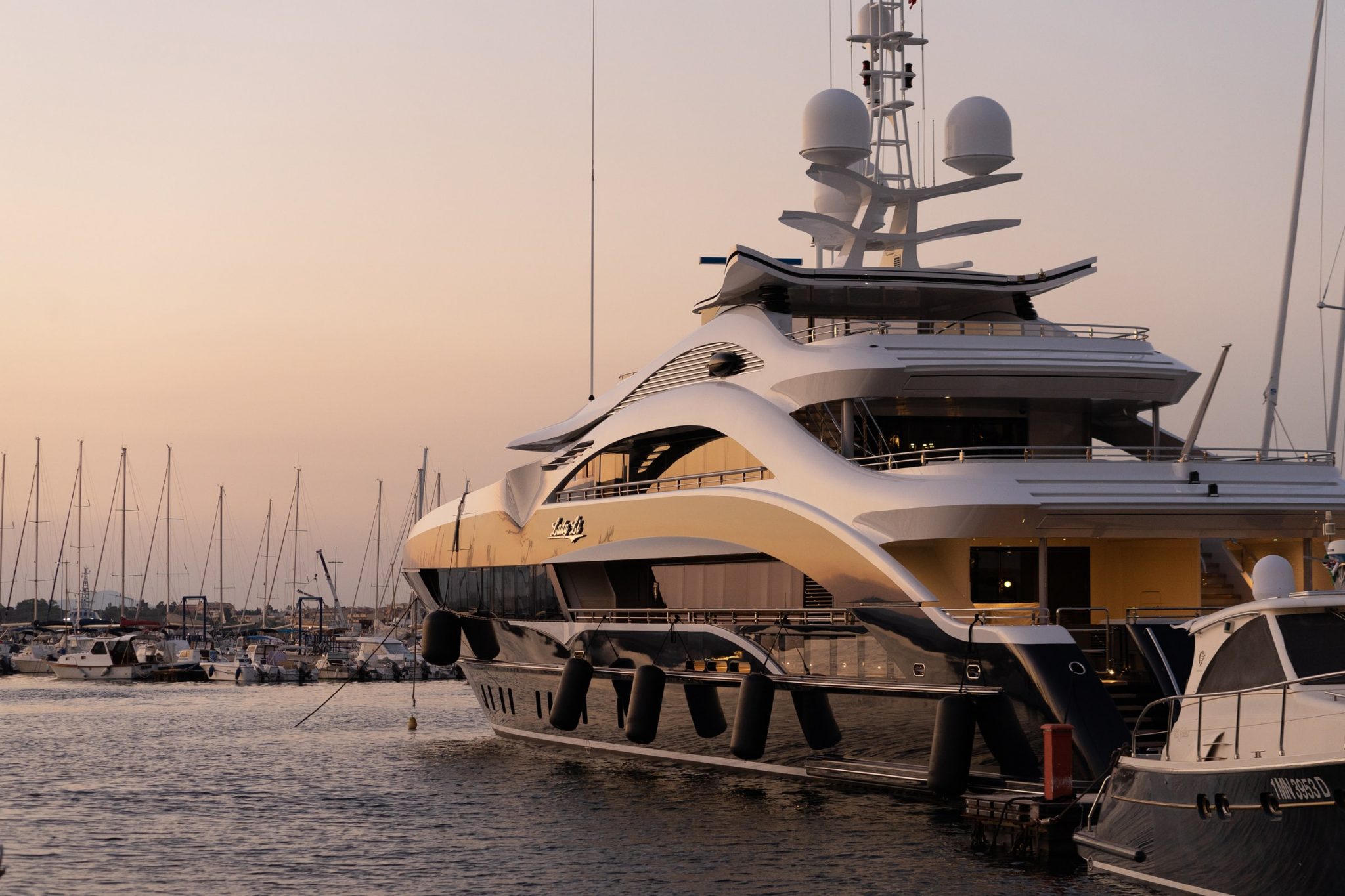
March 24, 2021 By : Administrator
From our Nomad: Life on Water Series
We all dream of a gorgeous luxury vacation at one point or another… someplace where you can feel the sand between your toes, hear the rush of the ocean waves, and simply relax. Maybe your dream includes adventure sports like jet skiing or parasailing, or maybe you’re more interested in simply exploring new destinations. Perhaps you want to float between islands in the teal waters of the Caribbean, or maybe the deep jewel tones of the Mediterranean call to you like a siren song.
Maybe you’re looking for more than just a vacation, but an entirely new lifestyle…Yachting is the solution.
Yachts come in all sizes and types and charter for (or book to go to) all kinds of destinations. Yachting can be a luxury vacation, a new lifestyle, or even a new vocation. Yachting is a rich world of exploration and enjoyment for just about anyone (not just the uber wealthy!)
In this beginner’s yachting guide we will cover all of the basics about yachting including:
What is Yachting?
- History of yachting
Who goes yachting?
Where do yachts go, what kind of yachts exist, what amenities do yachts have, how do i book a yacht, how much does it cost to take a yacht vacation, who crews a yacht, how do i work on a yacht.
- Yachting guide terminology
Safe Yachting Guide
And much, much more. So if you want to uncover all the secrets in the yachting world, let’s dive in to this yachting guide!
One of the most important parts of yachting is staying safe while overseas. We always recommend travel medical insurance that includes adventure sports coverage. To learn more about travel medical insurance and what plans are available, click here!
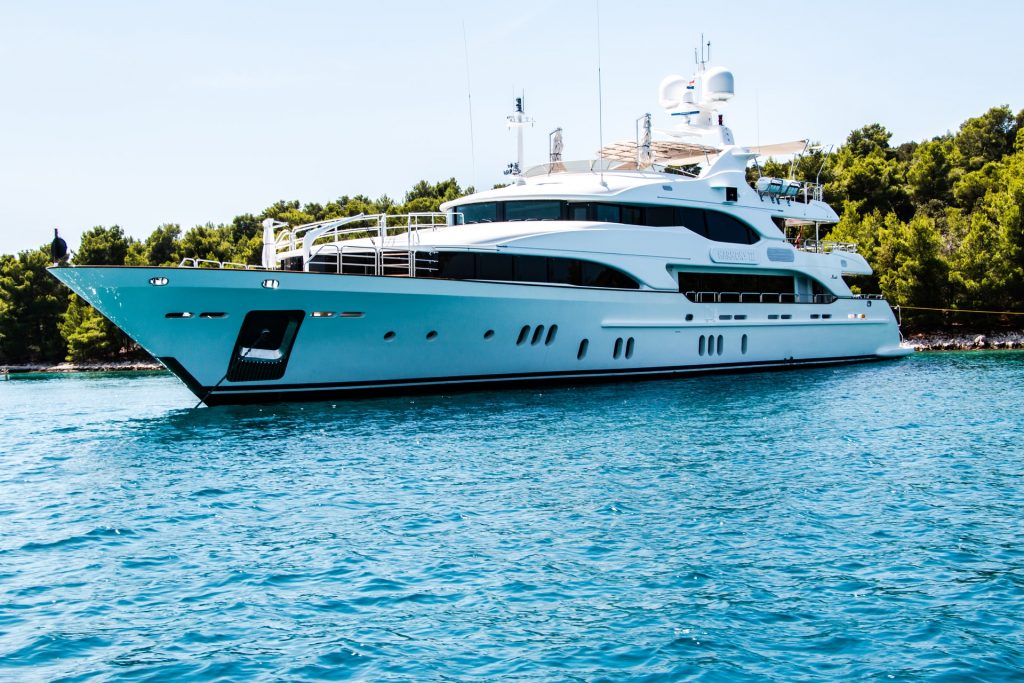
Yachting is the use of a boat designed for recreation or leisure to cruise or race.
Yachts are boats that differentiate from working boats like shipping or fishing boats because they are specifically tailored to include luxurious amenities and travel to various vacation destinations.
Boats that are considered yachts can typically house up to twelve guests in staterooms onboard, as well as crew members like deckhands and stewards to keep the boat in “ship shape”, or clean and ready to sail.
Yachting can be a short charter for a vacation of one or two weeks, or it can be an entire lifestyle.
History of Yachting

No yachting guide would be complete without a bit of history. While sailing has been around since before recorded history, yachting has its roots in more recent nautical history.
The first mentions of the word “yacht” appear in reference to boats designed for racing in 17th century europe. Boat racing became the pastime of the royals and the wealthy in England, Holland, France, and Spain. Eventually open ocean yacht racing became popular all the way to America and Australia.
Yacht races are still commonly held to this day, and include various lengths from crossing small bodies of water all the way up to racing around the world.
Yachts originally were designed as light, nimble ships in the water custom designed for speed. Their sizes ranged from that of a dinghy to ships that rivaled military battleships. These racing vessels were eventually classified into different sizes resulting in some of the terminology used to describe different ships to this day.
These days yachts are not only defined as ships designed for racing. In fact, the majority of yachts are not designed for speed at all. Now yachts are known as the height of luxury in life on water, specializing in leisure over work.
The simple answer? Anyone!
Yachts are designed for so many different types of lifestyles and people that there is no one kind of person that goes yachting.
These ships are great for people who want to spend some time away from the hustle and bustle of a 9 to 5 job and enjoy being on open water for a few days. Yachts are also great for large families or groups that would like to vacation privately together. Yachts are even good for small families looking to explore many different destinations in one single trip!
As you can see, there is no single group or type to go yachting because each charter is tailor made for the person or group booking the ship.
Like a tailor-made yachting charter, it’s also important to protect yourself with a tailor-made travel or expatriate medical insurance plan. Learn more about travel medical insurance that includes adventure sports in the video below!
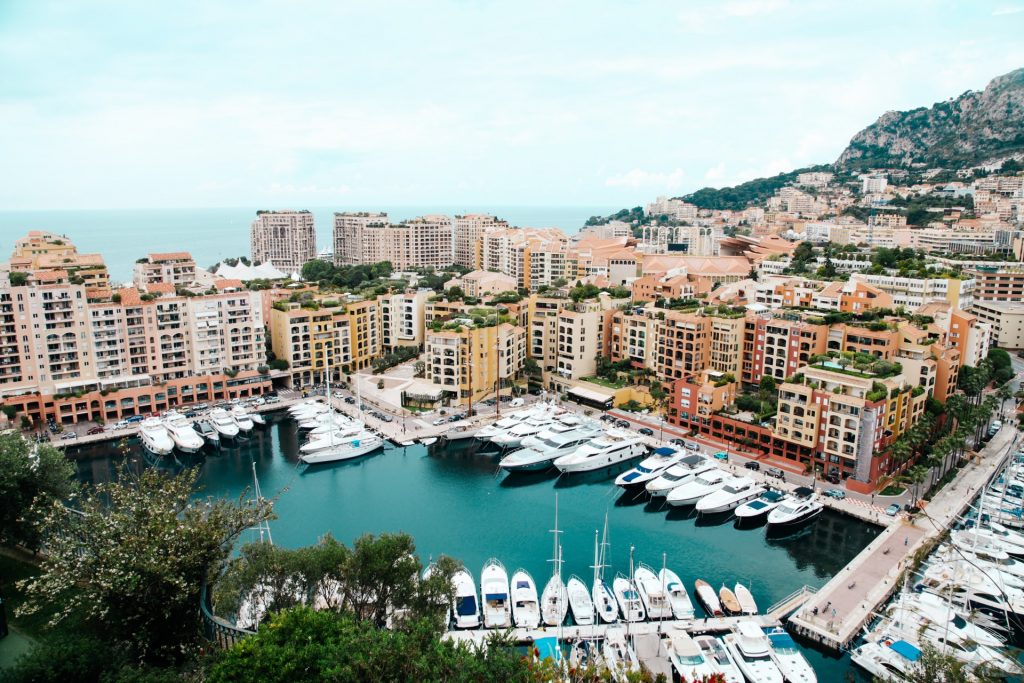
Yachts can go pretty much anywhere where there is relatively smooth sailing water and reasonable access. Depending on their size yachts can be on smaller bodies of water like lakes such as the Ozarks and Great Lakes in the United States, or they can call the entire ocean home and sail around the world regularly.
According to LuxuryDefined some of the best destinations for yachts include:
- The French Riviera
- U.S. Virgin Islands
- Palm Beach, Florida
- Costa Smeralda, Italy
- St. George’s Parish, Bermuda
- Newport, Rhode Island
- Nantucket, Massachusetts
- Greater Victoria, Vancouver Island
Source: https://christiesrealestate.com/blog/9-of-the-worlds-best-yachting-locations/
Yachts typically have a “season” in which they are most active. Depending on their home harbour, yachts will be most active in the summer months (May- August in the northern hemisphere) or the winter months. Spring and Fall seasons are generally times in which the boat is resting or preparing for the next active season.
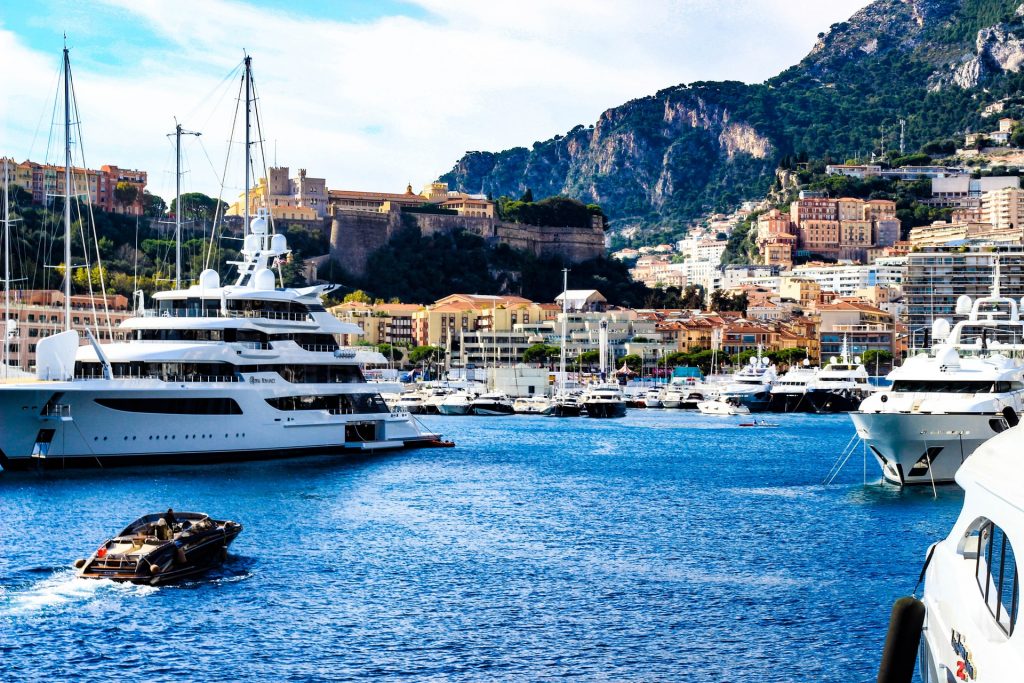
There are many different types of yachts from those that sail exclusively with motors, to those with two hulls called catamarans. Here is a basic yachting guide for the different types of yachts and their definitions:
Sailing Yacht: a yacht mainly propelled via wind and sails
Motor Yacht: a yacht propelled via one or more motors
Gulet Yacht: a hybrid yacht with both sails and motors
Open Yacht, Cruiser, Cabin Cruiser, Express Cruiser: an otherwise uncategorized standard yacht for cruising and entertaining
Luxury Yacht: a yacht that includes high-end finishes and features and the latest in modern performance technology. The term ‘luxury’ can precede any type of yacht, i.e. “luxury motor yacht”, “luxury sailing yacht”, etc.
Sports Yacht: a yacht geared towards fishing, water sports, or cruising with a sleeker design and more powerful motor for faster cruising speeds. The term ‘sports’ can precede other types of yachts as well, i.e. “sports motor yacht”.
Catamaran Yacht: a yacht with two hulls (pontoons) often made of fiberglass that can be used in shallow waters.
(source: https://vanislemarina.com/when-is-a-boat-a-yacht/ )
As you can see, yachts include a wide variety of types of ships with different methods of propulsion and design. Just like there isn’t one type of person that goes yachting, there isn’t just one type of yacht available. The opportunities and options are boundless when it comes to yachting!
Stay tuned for our next blog article all about sailing and the different types of ships that can be commissioned for vacation, or even a new lifestyle powered by the wind!
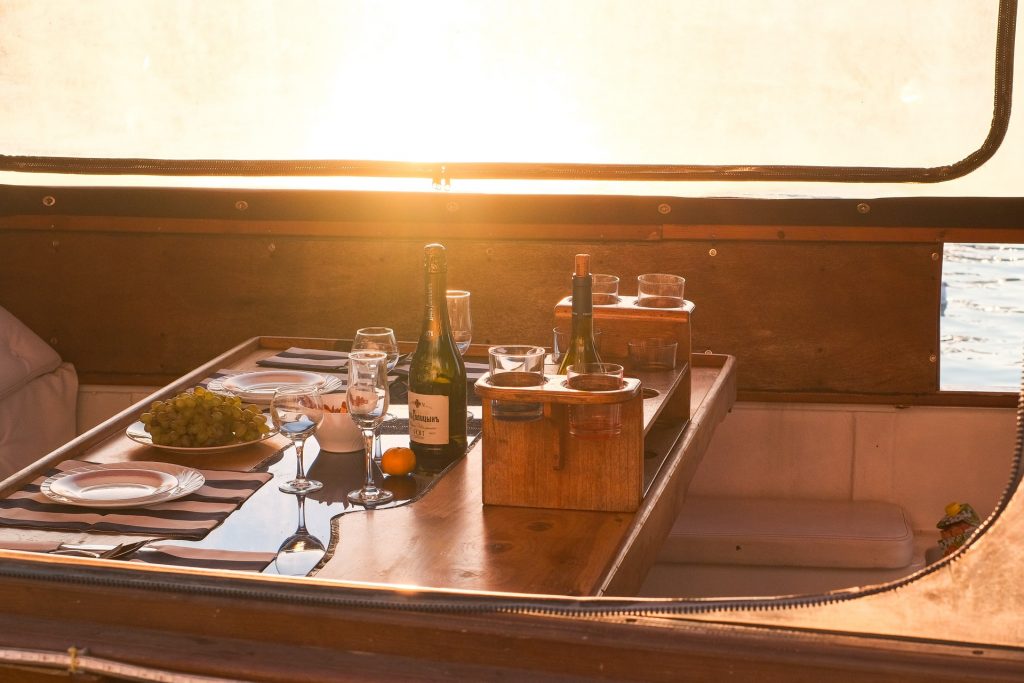
Basic yacht charters include provisions (food and consumables) as well as entertainment such as adventure sports equipment like scuba, snorkeling, or other water sports. Many yachts will include lifestyle amenities like wifi, cable TV, pools and jacuzzis, and indoor and outdoor seating or gathering areas to enjoy all the views the yacht will have to offer on charter.
Amenities are dependent on the yacht itself, so be sure to clarify with your broker what specific amenities you want when booking your vacation, or hiring crew.
Some of the craziest yacht amenities we’ve heard of include:
- Tennis Court
- “Nemo Lounge” or underwater observatory
- Drive in Tender Bay
- Outdoor Cinema
(Source: https://luxatic.com/coolest-luxury-yacht-amenities-on-superyachts-that-you-didnt-know-existed/ )
According to boatinternational.com some of the amenities you can expect to be available on different yachts include:
- Beach Club (water level rear deck)
- Salon Services
And of course, plenty of places to work on a tan.
(Source: https://boatinternational.com/charter/luxury-yacht-charter-advice/a-life-of-leisure-onboard-a-superyacht–1811)

Booking a yacht can seem like a daunting process, especially if you’ve never been before. Well, the experts at International Yacht Charter Group have put together a yachting guide to make it much easier. Here are their steps:
1. Choose a Yacht Charter Specialist.
Find a specialist who makes you feel comfortable with the process and who willingly seeks your input. This is the best way to ensure you book the ideal charter yacht. Choose a specialist without ties to specific charter yachts; you want information on the whole range of options, not limited to a small “in-house” selection. The specialist should be experienced and very competent so that you will feel confident about your yacht charter booking.
2. Select the Yacht and Destination.
Browse online to start gathering information about all your yacht and destination options. You will choose between motor and sailing yachts as well as what part of the world you want to explore. The specialists at International Yacht Charter Group visit many yachts worldwide each year and have extensive knowledge about what will work best for individual clients.
3. Fill Out Paperwork.
Once the ideal yacht is chosen for the dates you want, it will be reserved with a yacht charter contract between you and the charter yacht owner. Booking a yacht charter is different from reserving a plane ticket or villa! A standardized contract is drawn up, which is then discussed in depth with your specialist. The signed contract and 50% deposit will prevent anyone else from booking the yacht.
4. Prepare to Travel.
Prior to boarding the yacht, your charter specialist and the Captain and crew will prepare the yacht for your vacation. You will have filled out a preference sheet regarding food, wine, and activities (as well as your arrival/departure information). That way the yacht will be provisioned according to your preferred items. The Captain will prepare a draft itinerary for your yacht charter based on your thoughts and ideas, which you are encouraged to discuss via email or phone prior to departure.
Before you depart make sure you purchase travel medical insurance for all travelers that includes emergency evacuation. You can see travel medical and evacuation plans here and get a fast and simple quote simply by clicking on the orange “Quote” button in the top right corner.
5. Enjoy the Vacation!
While on charter, the Captain and crew are obviously your primary point of contact for questions about activities, meals, etc. Your Captain and crew act as concierge for your land-based adventures and on board activities. It’s recommended to discuss plans in advance whenever possible. Overall, a private yacht charter means there is no fixed itinerary, and typically some plans change en route.
Source: https://internationalyachtchartergroup.com/How-to-book-a-yacht-charter.php
You can contact international Yacht Charter Group to book a yacht by simply filling out their contact form: https://internationalyachtchartergroup.com/contactus/contactus-landing.php
The cost of renting a yacht depends on the size and type of ship, and the kinds of amenities desired in a ship.
According to worldwideboat.com, “the average weekly cost of a 100-foot sailing yacht is between $50,000-100,000. A weekly 80-foot catamaran charter runs around $40,000-100,000, and a week-long 100-foot motor yacht rental is anywhere between $50,000-80,000.”
A 100-foot yacht will typically comfortably house 12 guests in complete luxury, meaning each person can expect to contribute around $5000 for their week long vacation. While this is quite the luxury vacation, it is priced similarly to a high end all inclusive resort, and less expensive even than some of the high end cruise lines where your vacation is shared with hundreds of people!
If booking a yacht for a vacation isn’t the right choice for you, but you are interested in exploring the world or working on a yacht, this next section is for you!
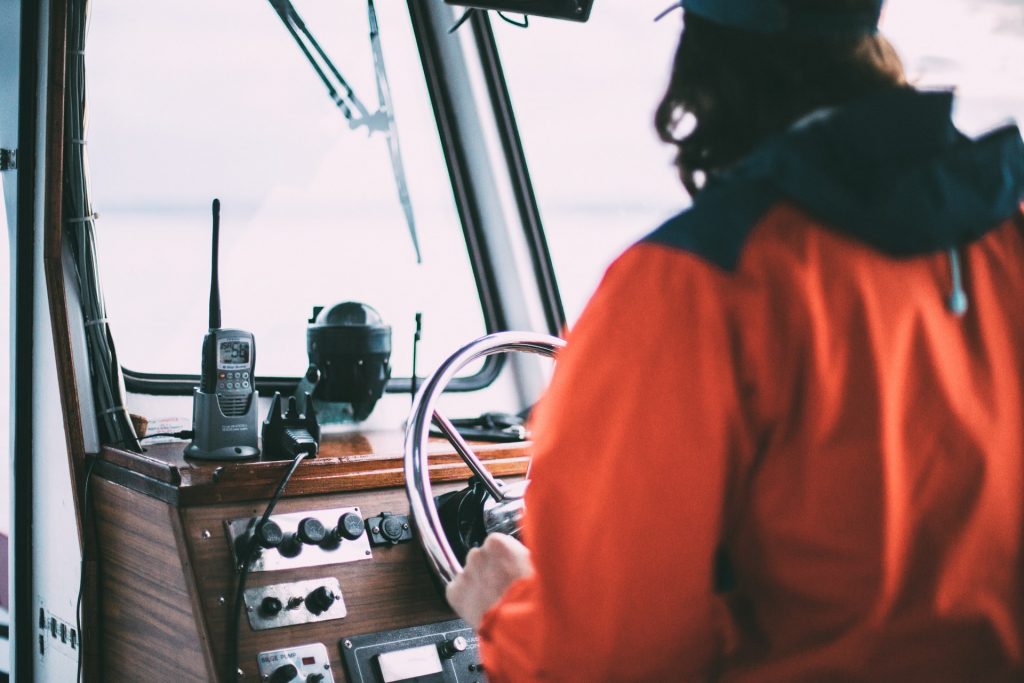
Yachts can have crews anywhere from a single captain to nearly 100 people. Depending on the size and amenities of the ship, the crew will include many different positions. Yacht crews are divided into four different departments, or categories: deck, interior, engineering, and galley.
On deck there are different levels of crew, the names of which are classically in the common lexicon including members like the captain, the first mate, and deckhands.
The people on deck are responsible for the navigation and bridge operation, safety, maintenance of the exterior, communication, and tender and recreation activities.
The interior department includes stewards and amenity specific positions like bartenders, salon services, masseuses, laundry, and finances.
Those assigned to the interior are responsible for the service on board, cleaning and maintenance of the cabins and living spaces, event planning and entertainment, and the indoor amenities offered onboard.
Engineering
The engineering department is responsible for all things related to the engine, electrical system, sanitation and environment control, planned maintenance, and troubleshooting issues on board.
Engineering generally consists of a smaller department of a chief engineer and either several specialists or simply a 2nd under them.
The galley department is responsible for all things food and beverage related. This department is always run by the head chef who will place provisional orders and with the help of a sous chef or other cooks will design and prepare a menu specific to the preference sheet of the guests. The galley is also responsible for provisions for the crew most often.
Getting a job on a yacht starts with appropriate training. Depending on the department or type of work you want to do, the training can vary from a few weeks all the way up to getting licensed as a captain.
Most deck crew have what is called a 6-pack captains license which allows them to captain the tender, or the smaller boat that takes people to and from the yacht when it is anchored.
Generally, the interior crew and galley crew are required to have food handlers certifications as they are serving food and alcohol regularly to guests.
After training, typically you would apply for positions in the months before a season and then maintain a position on a specific vessel for the entire season. Some crew management companies specialize in placement on different types of yachts, but typically the first year or two is spent on smaller vessels.
Getting into the yachting industry can be difficult as there is always competition due to the shorter seasons of work. Yachting requires workers to be away from home for many weeks at a time as well as includes strenuous physical labor. This means most yacht workers are young, single, and highly independent.
Before taking off on your new yachting job, make sure you have the right kind of international medical insurance. Learn more about international medical insurance to cover a roaming lifestyle at sea now!
Start your yachting career by searching for specific entry level positions in the department you’re most interested, and be prepared to travel!
Yachting terminology
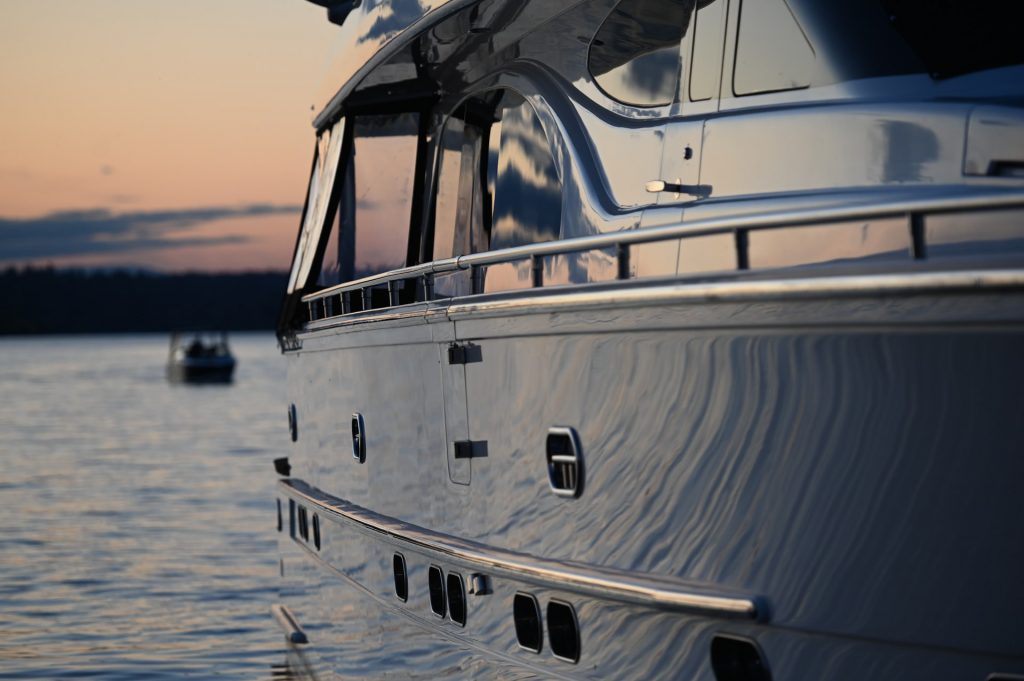
Want to know more about yachting? Well, this yachting guide includes some terms we’re sure you’ll run into throughout your adventure:
1. Aft – The back of a ship. If something is located aft, it is at the back of the sailboat. The aft is also known as the stern.
2. Bow – The front of the ship is called the bow. Knowing the location of the bow is important for defining two of the other most common sailing terms: port (left of the bow) and starboard (right of the bow).
3. Port – Port is always the left-hand side of the boat when you are facing the bow. Because “right” and “left” can become confusing sailing terms when used out in the open waters, port is used to define the left-hand side of the boat as it relates to the bow, or front.
4. Starboard – Starboard is always the right-hand side of the boat when you are facing the bow. Because “right” and “left” can become confusing sailing terms when used out in the open waters, starboard is used to define the right-hand side of the boat as it relates to the bow, or front.
5. Tender- a vessel used for servicing and providing support and entertainment to a private or charter yacht. They include utilitarian craft, powered by oar or outboard motor, and high-speed luxury craft, supporting superyachts, powered by inboard engines, some using water-jets.
6. Charter- the practice of renting, or chartering, a sailboat or motor yacht and travelling to various coastal or island destinations. This is usually a vacation activity, but it also can be a business event
Now you know the lingo, it’s time to get off on your adventure!
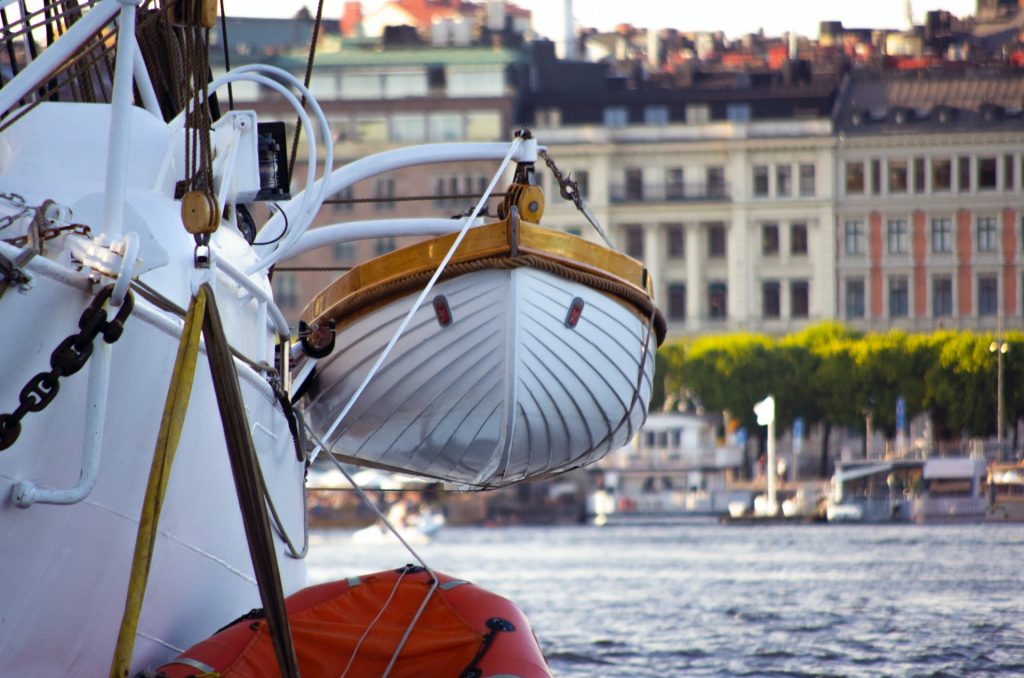
Whether on crew or on vacation on a yacht, one of the most important things is safety. While yachts are remarkably safe on water, it’s important to always listen to crew members and follow instructions.
By nature yachts can be slippery due to moisture on deck, difficult to balance due to waves and wind conditions moving the boat, and challenging to move through with smaller hallways and lower ceilings than typically seen on land.
Before going on any yachting adventure, in addition to a yachting guide, it’s important to make sure you have the right kind of protection in your pocket. That’s where international medical insurance comes into play.
Protecting yourself with an international medical plan, whether it’s just for a short trip of one or two weeks, or for an entire season offshore, is the most important step you can take to ensure your safety.
Travel and expatriate medical plans can cover you in the event of injury, illness, trip cancelation, evacuation, and much more. Plans are less expensive than you think starting at less than $1 a day, and you can get up to $1 Million in coverage or more depending on the plan of your choice.
Your safe yachting starts on dry land with your purchase of the right international insurance plan today. Click “get a quote” to get a quote now for your upcoming vacation, or explore plans by clicking on “plans” in the menu at the top of this page.
Good Neighbor Insurance is always here to answer any questions you may have and make sure you get the best insurance for your situation. Call our Gilbert, Arizona office at 480-813-9100, or click “chat with us” to get started right away!
Happy yachting!
Administrator
Search results, what happens if an employee misses open enrollment.
October 12, 2015
What Happens if an Employee Misses Open Enrollment? Open enrollment can be an extremely stressful and overwhelming time for both you and your employees. It is typically the only time during the year in which employees can make changes to their benefits choices, such as adding or dropping coverage, adding or dropping dependents, or enrolling […]

How to get the most out of your international group health insurance policy
September 10, 2010
1. Every year or two look around at other insurance options in the marketplace, as the insurance needs of your organization may have changed. Talk to your broker or agent, or call Good Neighbor Insurance, an international health insurance brokerage, at 1-866-813-9100 or 480-813-9100. We will be glad to look at insurance options for your staff […]

How to Submit a Claim to IMG – International Medical Group
March 17, 2015
Many of our clients are on the IMG (International Medical Group) plans that we provide, so we have published this article to explain how to submit a claim to IMG. Since we have been in business serving our clients starting in 1997, we know from experience that IMG is one of the best international medical insurance companies […]

7 Best Volunteer Trips You Can Do to Make a Difference
May 13, 2020
Let’s take a few seconds to look at the following images: How do you feel when you see them? Sad? Angry? Do you wish to be there to help clean the beach? Do you feel the urge to help build houses for those disaster victims? As a volunteer myself, seeing these images break my heart, […]

What are Travel Documents, and Why Are They Important?
June 26, 2020
You’ve been planning your trip for months. Meticulously finding the best prices for airfare, hotels, and transportation. Whether it’s an important work meeting or a fun get-away, it’s been on your mind for a long time. You pack, get a ride to the airport, and go through security only to find out that you have the […]


The 7 Best Ways to Make a Difference Overseas in 2021
September 15, 2020
We all have a desire to make the world a better place, to leave a lasting impact. The trouble is, where do we start? There are so many needs, and it feels like one person can’t make much of a difference. There are probably hundreds of needs around the world today. We have done some […]

Advertisement
Supported by
Lynch Yacht Sinking Off Sicily Proves as Baffling as It Is Tragic
As bodies were recovered, the authorities and experts wondered how a $40 million, stable and secure vessel could have sunk so quickly.
- Share full article

By Emma Bubola and Michael J. de la Merced
Emma Bubola reported from Porticello, Italy, and Michael J. de la Merced from London.
Two months after being cleared in a bruising legal battle over fraud charges, the British tech mogul Mike Lynch celebrated his freedom with a cruise. He invited his family, friends and part of his legal team on board his luxury sailing yacht, a majestic 180-foot vessel named Bayesian after the mathematical theorem around which he had built his empire.
On Sunday night, after a tour of the Gulf of Naples, including Capri, and volcanic islands in the Eolian archipelago, the boat anchored half a mile off the Sicilian coast in Porticello, Italy. It chose a stretch of water favored by the Phoenicians thousands of years ago for its protection from the mistral wind and, in more recent times, by the yachts of tech billionaires. The boat was lit “like a Christmas tree,” local residents said, standing out against the full moon.
But about 4 a.m., calamity unfolded. A violent and fast storm hit the area with some of the strongest winds locals said they had ever felt. Fabio Cefalù, a fisherman, said he saw a flare pierce the darkness shortly after 4.
Minutes later, the yacht was underwater. Only dozens of cushions from the boat’s deck and a gigantic radar from its mast floated on the surface of the sea, fishermen said.
In all, 22 people were on board, 15 of whom were rescued. Six bodies — five passengers and the ship’s cook — had been recovered by Thursday afternoon, including that of Mr. Lynch, an Italian government official said, adding that the search was continuing for his daughter.
It was a tragic and mystifying turn of events for Mr. Lynch, 59, who had spent years seeking to clear his name and was finally inaugurating a new chapter in his life. Experts wondered how a $40 million yacht, so robust and stable could have been sunk by a storm near a port within minutes.
“It drives me insane,” said Giovanni Costantino, the chief executive of the Italian Sea Group, which in 2022 bought the company, Perini, that made the Bayesian. “Following all the proper procedures, that boat is unsinkable.”
The aura of misfortune only deepened when it emerged that Stephen Chamberlain, 52, a former vice president of finance for Mr. Lynch’s former company and a co-defendant in the fraud case, was killed two days earlier, when he was hit by a car while jogging near his house in England.
Since June, the two men had been in a jubilant mood. A jury in San Francisco had acquitted both on fraud charges that could have sent them to prison for two decades. There were hugs and tears, and they and their legal teams went for a celebratory dinner party at a restaurant in the city, said Gary S. Lincenberg, a lawyer for Mr. Chamberlain.
The sea excursion was meant as a thank-you by Mr. Lynch to those who had helped him in his legal travails. Among the guests was Christopher J. Morvillo, 59, a scion of a prominent New York family of lawyers who had represented Mr. Lynch for 12 years. He and his wife, Neda, 57, were among the missing.
So, too, was Jonathan Bloomer, 70, a veteran British insurance executive who chaired Morgan Stanley International and the insurer Hiscox.
The body of the ship’s cook, Recaldo Thomas, was recovered. All the other crew members survived. Among them was Leo Eppel, 19, of South Africa, who was on his first yacht voyage working as a deck steward, said a friend, who asked not to be identified.
Since the sinking, the recovery effort and investigation have turned the tiny port town of Porticello, a quiet enclave where older men sit bare-chested on balconies, into what feels like the set of a movie.
Helicopters have flown overhead. Ambulances have sped by with the sirens blaring. The Coast Guard has patrolled the waters off shore, within sight of a cordoned-off dock that had been turned into an emergency headquarters.
On Wednesday afternoon, a church bell tolled after the first body bag was loaded into an ambulance, a crowd watching in silence.
The survivors were sheltering in a sprawling resort near Porticello, with a view of the shipwreck spot, and had so far declined to comment.
Attilio Di Diodato, director of the Italian Air Force’s Center for Aerospace Meteorology and Climatology, said that the yacht had most likely been hit by a fierce “down burst” — when air generated within a thunderstorm descends rapidly — or by a waterspout , similar to a tornado over water.
He added that his agency had put out rough-sea warnings the previous evening, alerting sailors about storms and strong winds. Locals said the winds “felt like an earthquake.”
Mr. Costantino, the boat executive, said the yacht had been specifically designed for having a tall mast — the second-tallest aluminum mast in the world. He said the Bayesian was an extremely safe and secure boat that could list even to 75 degrees without capsizing.
But he said that if some of the hatches on the side and in the stern, or some of the deck doors, had been open, the boat could have taken on water and sunk. Standard procedure in such storms, he said, is to switch on the engine, lift the anchor and turn the boat into the wind, lowering the keel for extra stability, closing doors and gathering the guests in the main hall inside the deck.

12 guests occupied the yacht’s six cabins. There were also 10 crew members.
Open hatches, doors and cabin windows could have let in water during a storm, according to the manufacturer.

Open hatches, doors and
cabin windows could
have let in water
during a storm,
according to the
manufacturer.
Source: Superyacht Times, YachtCharterFleet, MarineTraffic
By Veronica Penney
The New York Times attempted to reach the captain, James Cutfield, who had survived, for comment through social media, his brother and the management company of the yacht (which did not hire the crew), but did not make contact.
So far none of the surviving crew members have made a public statement about what happened that night.
Fabio Genco, the director of Palermo’s emergency services, who treated some of the survivors, said that the victims had recounted feeling as if the boat was being lifted, then suddenly dropped, with objects from the cabins falling on them.
The Italian Coast Guard said it had deployed a remotely operated vehicle that can prowl underwater for up to seven hours at a depth of more than 980 feet and record videos and images that they hoped would help them reconstruct the dynamics of the sinking. Such devices were used during the search and rescue operations of the Titan vessel that is believed to have imploded last summer near the wreckage of the Titanic.
After rescuers broke inside the yacht, they struggled to navigate the ropes and many pieces of furniture cluttering the vessel, said Luca Cari, a spokesman for Italy’s national firefighter corps.
Finally, as of Thursday morning, they had managed to retrieve all but one of the missing bodies, and hopes of finding the missing person alive were thin. “Can a human being be underwater for two days?” Mr. Cari asked.
What was certain was that Mr. Lynch’s death was yet another cruel twist of fate for a man who had spent years seeking to clear his name.
He earned a fortune in technology and was nicknamed Britain’s Bill Gates. But for more than a decade, he had been treated as anything but a respected tech leader.
He was accused by Hewlett-Packard, the American technological pioneer that had bought his software company, Autonomy, for $11 billion, of misleading it about his company’s worth. (Hewlett-Packard wrote down the value of the transaction by about $8.8 billion, and critics called it one of the worst deals of all time .) He had been increasingly shunned by the British establishment that he sought to break into after growing up working-class outside London.
He was extradited to San Francisco to face criminal charges, and confined to house arrest and 24-hour surveillance on his dime. In a townhouse in the Pacific Heights neighborhood — with security people he jokingly told associates were his “roommates” — he spent his mornings talking with researchers whom he funded personally on new applications for artificial intelligence. Afterward, he devoted hours to discussing legal strategy with his team.
Despite his persistent claims of innocence, even those close to Mr. Lynch had believed his odds of victory were slim. Autonomy’s chief financial officer, Sushovan Hussain, was convicted in 2018 of similar fraud charges and spent five years in prison.
During Mr. Lynch’s house arrest, his brother and mother died. His wife, Angela Bacares, frequently flew over from England, and she became a constant presence in the San Francisco courtroom during the trial.
After he was finally acquitted, Mr. Lynch had his eye on the future. “I am looking forward to returning to the U.K. and getting back to what I love most: my family and innovating in my field,” he said.
Elisabetta Povoledo contributed reporting from Pallanza, Italy.
Emma Bubola is a Times reporter based in Rome. More about Emma Bubola
Michael J. de la Merced has covered global business and finance news for The Times since 2006. More about Michael J. de la Merced
- Israel-Gaza War
- War in Ukraine
- US Election
- US & Canada
- UK Politics
- N. Ireland Politics
- Scotland Politics
- Wales Politics
- Latin America
- Middle East
- In Pictures
- Executive Lounge
- Technology of Business
- Women at the Helm
- Future of Business
- Science & Health
- Artificial Intelligence
- AI v the Mind
- Film & TV
- Art & Design
- Entertainment News
- Destinations
- Australia and Pacific
- Caribbean & Bermuda
- Central America
- North America
- South America
- World’s Table
- Culture & Experiences
- The SpeciaList
- Natural Wonders
- Weather & Science
- Climate Solutions
- Sustainable Business
- Green Living
How sinking of luxury yacht off Sicily unfolded

One man has died and six people are missing after a luxury yacht sank in freak weather conditions off the coast of Sicily.
The 56m British-flagged Bayesian was carrying 22 people - 12 passengers and 10 crew - when a heavy storm that created waterspouts struck early on Monday.
Fifteen people were rescued and a search operation for those unaccounted for - who include the British tech tycoon Mike Lynch - is continuing.
Here is what we know about the tragedy so far and how it unfolded.
What happened to the yacht?

The Bayesian was struck by a sudden and powerful storm in the early hours of Monday morning, witnesses say.
It was reportedly anchored to the sea bed outside the harbour at Porticello, a small fishing village to the east of Palermo, when what the Italian coastguard described as a "violent storm" hit.
The storm was so fierce that it caused waterspouts, or rotating columns of air and mist, to appear over the sea.
The vessel disappeared beneath the water at about 05:00 local time (04:00 BST).
A doctor treating survivors said the ship "capsized within a few minutes".
- Follow live updates here
- 'For two seconds I lost my baby in the sea' - yacht survivor
- Who are the missing and rescued?
- What might have caused yacht to sink
- Divers battle 10-minute dive window and debris in yacht search
Witnesses told Italian news agency Ansa that the Bayesian’s anchor was down when the storm struck, causing the 72m (236ft) aluminium mast to break in half and the ship to lose its balance and sink.
However, divers on the search and rescue team have said the ship was "practically intact" on the seabed, raising questions as to whether the mast was broken.
The ship's unusually tall mast may have contributed to its sinking, according to Matthew Schanck, chair of the Maritime Search and Rescue Council.
He told BBC Radio 4's Today programme that the mast acted almost like a sail in the strong wind "especially with it being so high".
The extreme winds could have caught the mast and pushed the yacht over, he said.
Karsten Borner, captain of a nearby boat, said after the storm had passed, the crew noticed the yacht that had been behind them had disappeared.
"We saw a red flare, so my first mate and I went to the position, and we found this life raft drifting," he told Reuters.
His crew took on board some survivors, including three who were seriously injured.
Another witness, Fabio Cefalù, captain of a trawler, said he was about to go out on a fishing trip when he saw flashes of lightning so he stayed in the harbour.
"At about 04:15 we saw a flare in the sea," he said, according to the EVN news agency reports.
"We waited for this waterspout to pass. After 10 minutes we went out to the sea and we saw cushions and all the rest of the boat [that had sunk], and everything which was on the deck, at sea. However, we did not see any people in the sea.”
Another fisherman described seeing the yacht sinking "with my own eyes".
Speaking to the newspaper Giornale di Sicilia, the witness said he was at home when the tornado hit.
"Then I saw the boat, it had only one mast, it was very big," he said.
Shortly afterwards he went down to the Santa Nicolicchia bay in Porticello to get a better look at what was happening.
He added: "The boat was still floating, then all of a sudden it disappeared. I saw it sinking with my own eyes."
One of the survivors, British tourist Charlotte Golunski, told Italian newspaper La Repubblica how she held up her one-year-old daughter Sofia to stop her from drowning.
She said the two of them and her partner James survived only because they were up on deck when the yacht sank.
They were woken by “thunder, lightning and waves that made our boat dance”, and it felt like "the end of the world" before they were thrown into the water.
Charlotte said: "For two seconds I lost my daughter in the sea, then quickly hugged her amid the fury of the waves."
She added: "I held her afloat with all my strength, my arms stretched upwards to keep her from drowning.
"It was all dark. In the water I couldn't keep my eyes open. I screamed for help, but all I could hear around me was the screams of others."
What is the latest with the search?
Six passengers remain missing and the Palermo coastguard says the search and rescue operation is continuing "incessantly".
The search began on Monday and specialist divers have been working at the site since early on Tuesday morning.
One diver told Italian media the yacht was "practically intact" on its side at the ocean's basin, about 50m below the surface.
The ship's hull is obstructed with furniture and various objects, the Italian fire and rescue service has said.
Divers are looking for ways to access the yacht's cabins, but they have just 10 minutes to search on each dive before they need to return to the surface, the Italian news agency Ansa has reported.
A 1cm thick glass window is also being considered as an entry point.
Francesco Venuto, a spokesperson for Sicily's civil protection agency, told the BBC on Monday rescue teams fear the bodies of those missing "must be" in the boat.
"We've been searching all day with helicopters and boats, we've found nothing. That wouldn't make sense. In these conditions, we should have found something by now," he added.
A specialist caving search and rescue diving team arrived from Rome on Monday, hoping to "achieve results" either during the night or by Tuesday morning at the latest, the director general of Sicily's civil protection agency, Salvatore Cocina, said.
On Monday, the UK's Marine Accident Investigation Branch sent a team of four investigators to carry out a preliminary assessment of the Bayesian's sinking, the BBC understands.
Who was on board?

There were 22 people on board when the storm hit, including 12 passengers and 10 crew.
The body of one man has been recovered. He has not been formally identified, but the Palermo coastguard said he was the ship's cook. His nationality has not been confirmed.
Among the six people still missing is 59-year-old tech entrepreneur Mike Lynch, known by some as the "British Bill Gates".
Mr Lynch founded software giant Autonomy in 1996 and was awarded an OBE for services to enterprise in 2006.
In June, he was cleared of conducting a massive fraud relating to an $11bn (£8.64bn) sale to US company Hewlett Packard.
Afterwards, he told the BBC in an interview he had been able to prove his innocence only because he had the wealth to pay the enormous legal fees required.
The other missing people include Mr Lynch's 18-year-old daughter Hannah, Morgan Stanley International bank chairman Jonathan Bloomer, and Clifford Chance lawyer Chris Morvillo.
Mr Lynch's wife Angela Bacares is among the 15 people to have been rescued, with eight of those receiving treatment in hospital, the Italian coastguard said.
Charlotte Golunski, her husband and daughter Sofia were also rescued and were unharmed, but taken to hospital for check-ups.
She said they had been on the yacht with a group of colleagues.
The daily Il Giornale di Sicilia newspaper reported the vessel had mostly British passengers on board, but also people from New Zealand, Sri Lanka, Ireland and British-French citizens.
A doctor based in Palermo said the "very tired" survivors were "constantly asking about the missing people".
Dr Domenico Cipolla told Reuters that one woman he treated described the trip as a "corporate holiday", with some of those on board "very young".
"There were a lot of work colleagues, friends, a few husbands, wives, or a couple of friends who had joined in," he adds.

What is a waterspout and why do they form?
A waterspout is similar to a tornado and can form over oceans, seas or large lakes.
The western half of the Mediterranean has experienced severe storms since the middle of last week.
Through Sunday night and into Monday morning, a zone of bad weather passed by the north coast of Sicily.
BBC Weather forecaster Matt Taylor said: "A waterspout is a tornado that has occurred over water rather than land.
"They can form during intense storms, on the base of cumulonimbus/thunder clouds.
"Turbulence, and the wind blowing in slightly different directions around the cloud, can cause rotation under the base of the cloud and the spout to form.
"Like tornadoes, they bring powerful winds, but instead of picking up dust and debris they cause a water mist around the column of rotating air."
What is the Bayesian, and who owns it?
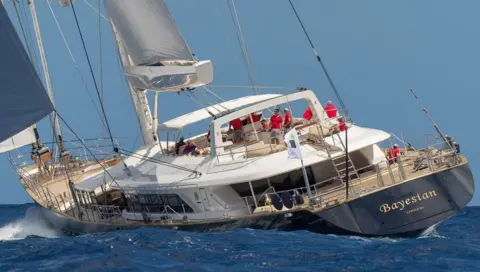
The superyacht can accommodate up to 12 guests in six suites, and is listed for rent for up to €195,000 (£166,000) a week.
It was built in 2008 by Italian company Perini Navi.
The Bayesian's registered owner is listed as Revtom Ltd, which is based on the Isle of Man.
The yacht's name is understood to derive from the Bayesian theory, which Mr Lynch's PhD thesis and the software that made his fortune was based on.
Mr Lynch's wife Ms Bacares is named as the sole legal owner of Revtom, which is registered in the Isle of Man.
The Bayesian completed a number of sailings in recent days, calling at various ports in Sicily, according to ship-tracking website VesselFinder.
A spokesperson for Camper and Nicholsons International, the firm that manages the 2008-built boat, told BBC Verify: "Our priority is assisting with the ongoing search and providing all necessary support to the rescued passengers and crew."

Living on a Yacht: Weighing the Pros and Cons of a Luxury Lifestyle
Explore the dream – and the realities – of Living on a Yacht, offering insights into the freedom and challenges it entails. From financial considerations and space optimization to the impacts of weather and community aspects, it provides a balanced view to help readers make an informed decision about this unique lifestyle.
Imagine the gentle sway of waves, the endless horizon of the sea, and the allure of waking up to a different view every morning. This isn’t a holiday brochure; it’s the possibility of your new life on a yacht. It’s a dream for many, but what does it truly entail? In this exploration, we delve into the reality of yacht living. It’s not all sunsets and sea breezes. Like any home, a yacht has its charms and challenges.
For those in their prime years, considering a shift from a traditional home to a yacht is more than just a change of address. It’s a lifestyle overhaul. We’re not just talking about a snug living space or the need to be a Jack-of-all-trades at sea. It’s about embracing a unique blend of freedom and responsibility.

Our journey through this blog post is not just about painting a rosy picture. It’s about providing a realistic lens through which you can view this significant life decision. We’ll explore how this choice fits into your life puzzle, whether you’re an adventurous soul seeking the thrill of the open seas or a contemplative mind looking for serenity away from the land’s hustle.
As you read through, remember, every big decision comes with its highs and lows–like the tides. Yacht living is no exception. So, let’s set sail on this exploratory voyage to uncover what lies beneath the surface of living on a yacht.
The Allure of Yacht Living
The concept of yacht living taps into a deep-seated desire for freedom, an intimate connection with nature, and a sense of belonging within a unique community. Living on a boat isn’t just about the physical space you inhabit; it’s about the lifestyle and experiences that come with it. From the flexibility to cruise to new locations on a whim to the close-knit marina communities, yacht life offers a distinct way of living that is both challenging and rewarding.The
The Freedom and Flexibility of Location of Luxury Yacht Living
One of the most enticing aspects of living aboard a yacht is the sheer freedom it offers. Imagine having the ability to change your scenery whenever you wish. Whether it’s anchoring in a secluded bay or docking at a vibrant marina, your home is as mobile as you desire. This flexibility allows for a life unbound by the traditional constraints of geographical location.
Sailing from one destination to another, you’re not just moving your home; you’re embracing a lifestyle that allows for spontaneous adventures and experiences. The freedom to explore coastal towns, hidden coves, and open seas is unparalleled. This nomadic way of life provides a sense of liberation and adventure that is hard to find in traditional living arrangements.
Proximity to Nature and Unique Living Experiences
Living on a yacht brings you closer to nature in a way that few other lifestyles can. The rhythm of the waves, the panoramic ocean views, and the ability to witness marine life up close become a part of your daily life. This connection to the natural world is not just visually stunning but also offers a sense of peace and tranquility.
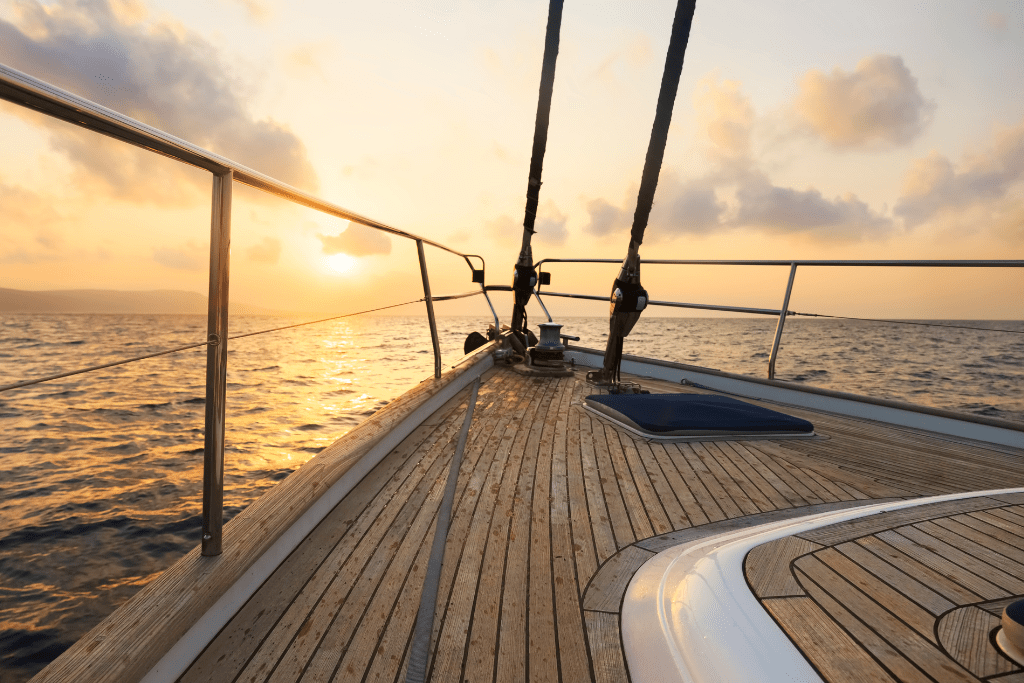
The unique living experiences that come with yacht life are endless. From waking up to the gentle lapping of waves against the hull to enjoying sunsets over the water every evening, these experiences enrich life aboard. Each day presents an opportunity to create unforgettable memories, whether it’s swimming in crystal-clear waters, fishing for your dinner, or simply enjoying the serenity of the sea.
Overview of the Sense of Community in Marinas and Sailing Circles
One might think that living on a boat could be isolating, but the reality is quite the opposite. Yacht marinas and sailing communities are often vibrant and welcoming. When you dock or anchor your yacht, you’re not just stopping at a place; you’re becoming part of a community. These communities are characterized by shared experiences, mutual assistance, and a common passion for the sea.
Life in a marina is rich with social interactions. Fellow liveaboards and sailors form a tight-knit community, often gathering for shared meals, group excursions, or simply exchanging stories and advice. This camaraderie is a significant part of the allure of yacht living. The sense of belonging is palpable, as everyone shares a common understanding of the joys and challenges of life at sea.
The community extends beyond the physical confines of the marina. Sailing circles worldwide are connected by a shared love for cruising and exploration. Whether it’s through organized regattas, informal meet-ups, or online forums, these connections foster a sense of global community. Sailors often form lasting friendships, bound by their shared experiences and adventures at sea.

Marinas often host events and activities that further strengthen these bonds. From educational workshops to social gatherings, there is a sense of collective growth and enjoyment. Living at a marina or being part of a sailing community isn’t just about having a place to dock your boat; it’s about being part of a supportive and engaging network that enriches your life aboard.
If you’re considering taking this step into yacht life, you may want to consider a test run. Charter a private yacht and try this lifestyle out for yourself. You may even decide you prefer renting over buying. Rent one model today, and then — when your mood or plans change — change the yacht for rent. You don’t have to commit right away, this isn’t a marriage, it’s a yacht.
Space and Design: Adapting to Yacht Interiors
Transitioning to live on a boat full-time introduces a unique set of challenges and opportunities, particularly when it comes to space and design. Yacht interiors, whether in a luxury yacht or a modest sailboat, require thoughtful planning and clever solutions to make the most of the available space. This section delves into the art of maximizing space, the crucial role of organization, and the myriad ways you can personalize your floating home.
Maximizing Limited Space: Innovative Design Solutions
The key to successful boat life lies in efficiently utilizing the limited space. Every square inch on a boat counts, and making the most of this space is vital for comfortable living. Design solutions often involve multi-functional furniture, such as beds with storage underneath, foldable tables, or convertible seating areas. These innovations allow for a practical living environment without sacrificing comfort or style.
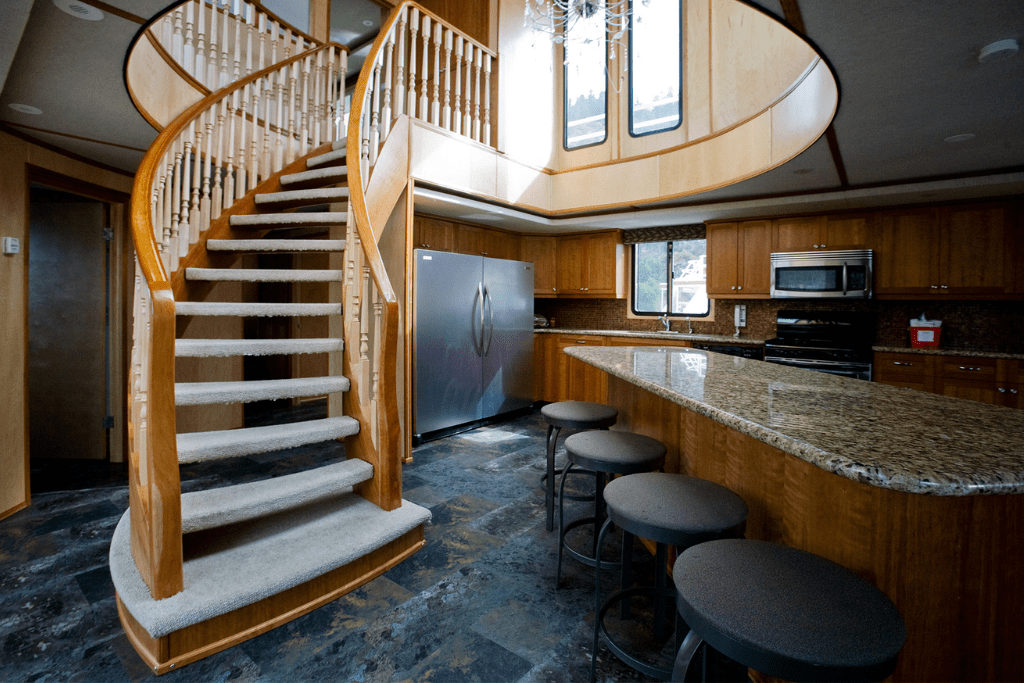
Another aspect is the strategic use of vertical space. Wall-mounted shelves, hanging organizers, and overhead storage can free up valuable floor space. In a sailboat, for example, the interior can be designed with built-in storage in unexpected places like under the stairs or in the hull. This approach ensures that every part of the boat is utilized effectively.
The type of boat also plays a role in how space can be maximized. For instance, catamarans typically offer more living space compared to monohulls, making them a popular choice for those looking to move aboard full-time. Regardless of the boat type, the goal is to create a space that is both functional and comfortable.
The Importance of Efficient Organization When Yachting
Living on a boat full-time demands a high level of organization. The limited space means there’s little room for clutter, making it essential to keep everything in its place. Efficient organization not only makes life on board more comfortable but also ensures safety when the boat is in motion.
Organizational strategies include using containers and baskets to keep items secure, labeling storage areas for easy access, and regularly decluttering to avoid accumulating unnecessary items. This discipline in organization extends to all aspects of boat life, from the kitchen and living areas to personal belongings and maintenance tools.
Boat insurance policies often require certain safety standards to be maintained,
and a well-organized boat is more likely to meet these requirements. Keeping equipment properly stored and accessible can be critical in emergencies. Additionally, an organized interior can help in reducing the overall cost of living on a boat, as it prevents damage and loss of items, which could be costly to replace.
Customization Options for Personalizing Your Space
Turning a yacht into a home involves more than just functional adjustments; it’s about infusing your personality into the space. Customization allows boat dwellers to create an environment that reflects their style and preferences, adding to the enjoyment of luxury yacht living.
Personalizing a yacht interior can range from choosing color schemes and fabrics to selecting artwork and – perhaps – some nautical-themed decorative items . Many boat owners opt for a full tour of customization, tailoring each aspect of the yacht to their liking. This could include custom-built furniture, unique lighting fixtures, or bespoke floorings, such as teak or bamboo.
For those living on a sailboat, customization might mean optimizing the layout for sailing efficiency while also creating a cozy, livable space. This could involve installing custom cabinetry that fits the boat’s contours or adding personal touches like cushions and throws that make the space feel like home.
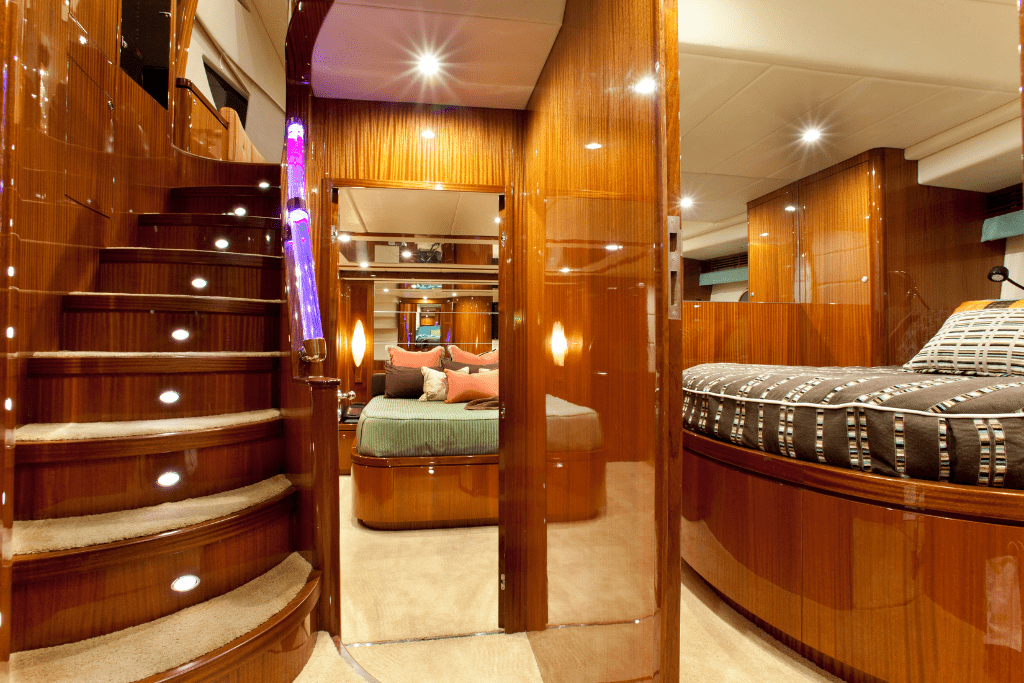
Customization also extends to technological upgrades. Modern yachts can be equipped with advanced navigation systems, entertainment setups, and climate control, enhancing the overall experience of boat life. These modifications not only add comfort but also can increase the boat’s value.
In essence, adapting to yacht interiors is a blend of practicality, organization, and personalization. Whether you’re planning to move aboard a sailboat or a luxury yacht, these elements work in harmony to create a living space that is not just functional but truly feels like home.
Climate Considerations When You Live on a Boat Full-Time
The climatic conditions of the chosen residence place or travel route are not the most obvious factor which must be noted. Being in a city apartment or a private house, we don’t think much about the weather outside the window. If a strong wind blows outside, heavy rain falls or the temperature suddenly drops, we will feel almost nothing.
On a yacht, the weather does not just play an important role, your safety and comfort directly depend on it. Each boat is individual and suitable for certain climatic conditions. It is worth analyzing all the characteristics of the boat in advance and honestly evaluating its capabilities in order to accurately determine whether it is possible to live on a yacht all year round in your chosen water area.
Financial Considerations: The Cost of Yacht Life
Embarking on the journey of yacht life involves more than just adapting to a new way of living; it also requires a clear understanding of the financial implications. While it’s easy to romanticize the idea of sailing around the world or living full-time on a boat, the reality comes with its own set of financial responsibilities. From the initial purchase of the boat to ongoing expenses and the comparison to traditional homeownership, understanding these costs is crucial for anyone considering this lifestyle.
Initial Investment: Purchasing and Outfitting a Yacht
The first step in yacht life is acquiring the right boat. This involves not only finding the best boat that suits your needs but also managing the financial investment it requires. The cost of a new boat can vary widely, depending on factors such as size, brand, and features, some of which we covered above. Choosing to live on a larger boat or a luxury cruiser naturally involves a higher initial investment.
In addition to the purchase price, outfitting a yacht for full-time living is a significant consideration. This may include upgrading boat systems, adding navigation equipment, and customizing the interior to make it livable. Even if you opt for an old, more affordable boat, it could require substantial investment in renovations and upgrades.
Furthermore, acquiring the necessary knowledge and skills for yacht maintenance and sailing is part of the initial investment. This might entail sailing courses, safety training, and learning about the nautical aspects of yacht care.
Ongoing Expenses: Maintenance, Docking Fees, Insurance
Once you own a yacht, the financial commitments continue. Boat maintenance is an ongoing requirement and a crucial part of life aboard. The yacht owners will need knowledge and skills to keep the yacht in good condition. Regular upkeep ensures the safety and longevity of your boat. This includes everything from engine maintenance to hull cleaning and can vary greatly in cost, depending on the age and condition of your boat.
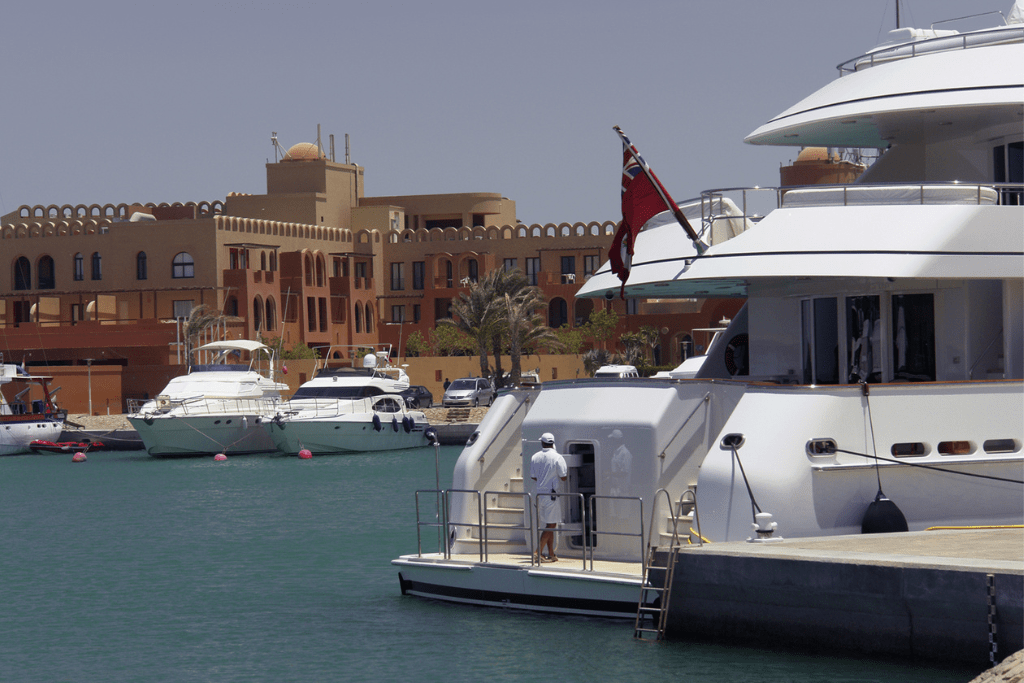
Docking fees are another significant expense, especially if you choose to stay at marinas. The cost can vary based on location and the services offered. Additionally, a dinghy might be necessary for transportation to and from the shore, adding to the expenses.
Insurance is an essential consideration for any boater. Boat insurance policies can be complex and vary greatly in coverage and cost. It’s crucial to have a comprehensive policy that covers potential damages and liabilities, especially when living on a boat full-time.
Comparing the Cost of Living to Traditional Homeownership
When contemplating yacht life, it’s common to wonder if you’ll save money compared to traditional homeownership. The answer depends on various factors, including the type and size of the boat, the chosen lifestyle, and where you plan to dock or anchor.
Annual costs for yacht living can include maintenance, insurance, docking fees, and fuel, which can be comparable to or even exceed the costs of owning a home. However, some expenses, like property taxes and certain utilities, may be lower or non-existent.

It’s also important to consider the value of the experience and lifestyle when comparing costs. Yacht life offers a unique set of experiences and freedoms that traditional homeownership cannot provide. While the financial aspect is crucial, the decision to live on a yacht often goes beyond mere economics.
Living on a boat full-time can also mean a shift in priorities and lifestyle choices. For some, this means downsizing and simplifying life, which can lead to reduced overall living expenses. However, for others, particularly those choosing a luxury yacht or a larger boat, the costs can be comparable to or even exceed those of a high-end terrestrial home.
Challenges and Downsides of Full-Time Living on a Boat
Living on a yacht presents a unique set of challenges and downsides that are important to consider before making the leap into this lifestyle. While the idea of living on a boat may evoke images of endless sunsets and tranquil waters, the reality can be quite different. Factors such as weather dependency, limited access to facilities, and the psychological impacts of isolation and confined spaces play a significant role in day-to-day life on a yacht.
Weather Dependency and Its Impact
One of the most significant challenges of living on a yacht is the constant need to be mindful of the weather. Your entire life becomes closely tied to weather conditions, which can change rapidly and without warning.
- Safety Concerns : Severe weather can pose serious safety risks. Being caught in a storm while at sea can be dangerous, and even when docked, high winds and waves can cause damage to your yacht.
- Lifestyle Adjustments : Daily activities and travel plans often have to be adjusted according to the weather. This can mean being stuck in a location longer than planned or missing out on certain experiences.
- Constant Vigilance : Living on a yacht requires a high level of awareness and knowledge of weather patterns. This can be mentally taxing, as one always needs to be prepared for the possibility of changing plans or taking emergency precautions.
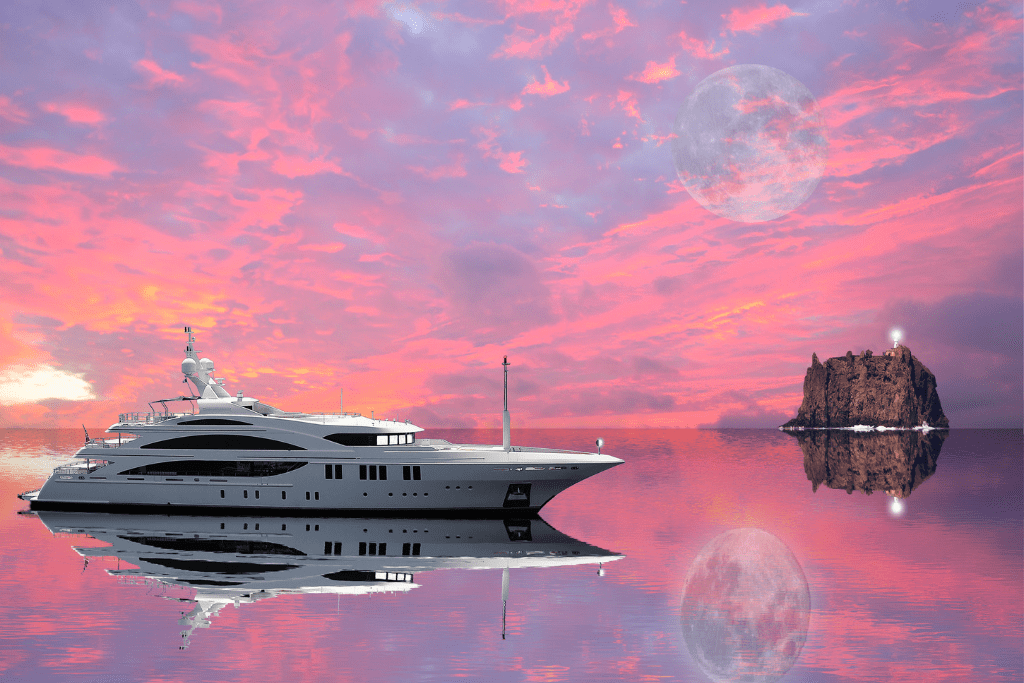
Remember the old saying, “Red sky at night, sailors delight. Red sky in the morning, sailors take warning!”
Limited Access to Certain Facilities and Services When You Live on a Yacht
Another downside of yacht life is the limited access to facilities and services that are often taken for granted on land.
- Healthcare and Emergency Services : In remote areas, access to healthcare and emergency services can be limited or delayed. This can be a concern for those with medical conditions or in case of accidents.
- Utility Services : Services like high-speed internet, electricity, and plumbing work differently on a yacht and may not always be reliable. This can affect both work and daily living.
- Convenience and Shopping : Getting groceries or finding specific supplies can be challenging, especially when anchored away from urban centers. This requires careful planning and often means you can’t have everything you want when you want it.
Dealing with Isolation and Confined Spaces When Living Aboard a Boat
The psychological aspects of living on a yacht are often overlooked, yet they are crucial for a sustainable life at sea.
- Isolation from Society : While some seek solitude, prolonged periods of isolation can affect mental health. Being away from family, friends, and the wider community can lead to feelings of loneliness.
- Small Living Quarters : The confined space of a boat can be challenging, especially for those used to larger living spaces. It requires adjustments in both physical belongings and mental preparedness for close-quarters living.
- Cabin Fever : Spending extended periods on a boat, especially during bad weather when you can’t leave, can lead to a sense of restlessness or cabin fever. This is where the small space and isolation can compound to impact mental well-being.
While living on a yacht can be an incredibly rewarding experience, it’s important to acknowledge and prepare for the challenges and downsides. Understanding the realities of weather dependency, limited access to amenities, and the psychological effects of isolation and confined spaces is crucial for anyone considering making a boat their home. These factors are integral to life at sea and require careful consideration and planning to ensure a fulfilling and sustainable lifestyle on the water.
Summary and Key Takeaways
Living on a yacht is a dream many aspire to, but it’s essential to approach this lifestyle with a well-informed perspective. This article has journeyed through the various facets of yacht living, weighing both its enchanting appeal and the pragmatic realities.
Recap of the Pros and Cons
- Pros : The freedom to explore new horizons, the intimacy with nature, and the unique sense of community in marinas and sailing circles are among the most compelling benefits. The ability to customize your living space and the adventure that comes with a nautical lifestyle are undeniably attractive.
- Cons : However, these benefits are balanced by challenges such as weather dependency, limited access to facilities and services, and the psychological impacts of living in confined spaces. Financial considerations, including the initial investment and ongoing maintenance costs, are significant.
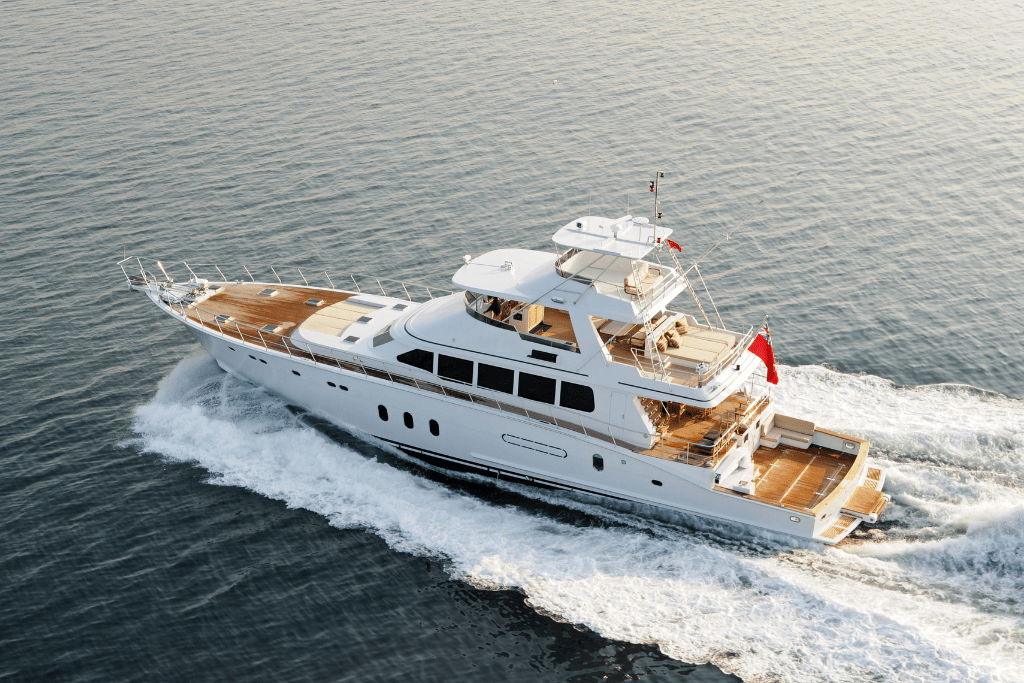
Making a Well-Informed Decision
Deciding to live on a yacht should not be made lightly. It’s a decision that requires thorough consideration of both the financial implications and the lifestyle changes. Prospective yacht dwellers should research extensively, speak with experienced individuals, and realistically assess their readiness for such a commitment.
Final Reflections on Embracing the Yacht Lifestyle
For those who find the allure irresistible, yacht living can be incredibly rewarding. It offers a unique way of life that blends adventure with simplicity, freedom with responsibility. If approached with careful planning and realistic expectations, living on a yacht can provide an enriching and fulfilling experience.
Please note that the information provided in this article is for informational purposes only and should not be considered professional advice. Prospective yacht owners are encouraged to consult with qualified professionals for specific advice related to legal, financial, and practical aspects of living on a yacht.
Leave a Comment Cancel Reply
Your email address will not be published. Required fields are marked *
Please Note: Due to the ongoing impact of Covid-19, orders are taking longer than normal to ship. Please allow 4-6 weeks for delivery on most items. Dismiss
- Search Please fill out this field.
- Manage Your Subscription
- Give a Gift Subscription
- Newsletters
- Sweepstakes
:max_bytes(150000):strip_icc():format(webp)/mariah-carey-tout-082624-1b486bc98fcf43dcb4126e7fcb91a8cf.jpg)
- Human Interest
- Real People
- Real People Tragedy
Attorney Was 'on Top of the World' Before Yacht Tragedy, Planned to Make Up for Lost Time with Family (Exclusive)
Chris Morvillo had “missed a lot," but after a recent legal win, he was looking forward to "devoting" himself to his family, a friend and former colleague says
Diane Herbst is a reporter at PEOPLE.
:max_bytes(150000):strip_icc():format(webp)/IMG_42371-ec8b1feb12f54301b8a42f3036e36013.jpg)
Patrick McMullan/Patrick McMullan via Getty
After a years-long legal saga that resulted in the acquittal of his client Mike Lynch , Christopher Morvillo was looking forward to finally getting some time to relax and spend more time with his family, a former colleague and friend tells PEOPLE. Sadly, the New York City attorney and his wife, jewelry designer Neda Morvillo , died after a luxury yacht sank off the coast of Sicily . Ed O’Callaghan, a former Justice Department official and close friend of the attorney, tells PEOPLE that Morvillo, 59, hoped to spend time with his wife, 57, and two adult daughters, Sabrina and Sophia Morvillo.
“He missed a lot,” O’Callaghan says. “He was just buried in putting together the defense for Lynch. And I think he really thought the near future was going to be a lot of wonderful payback time with the family.”
Chris and Neda were among the guests aboard the Bayesian to celebrate the fact that Lynch had been acquitted of 15 fraud and conspiracy charges . Then, on the morning of Monday, Aug. 19, a powerful storm sunk the 183-foot vessel .
Lynch, his 18-year-old daughter, Hannah , Morgan Stanley International chairman Jonathan Bloomer and his wife Judy , and the ship’s chef Recaldo Thomas also died in the tragedy.
O’Callaghan, who worked with Morvillo both at the N.Y.C. office of Clifford Chance and when they were federal prosecutors, says the attorney was “ebullient” after winning the court case.
“It is just an enormous degree of satisfaction that you can take as an attorney,” O’Callaghan tells PEOPLE. “The percentages are not with you going to trial in a federal criminal case as a defense lawyer, and to win an acquittal across the board in a case like that, the Department of Justice is literally put over a decade of work into is a career accomplishment that very few very top-tier lawyers experience in their careers.”
In a post on LinkedIn following the June verdict, Chris thanked the team of trial lawyers which he co-led defending Lynch, noting that he was “so glad to be home” after the San Francisco trial, and ended his post by writing, “ And they all lived happily ever after ….”
Scott Eells/Bloomberg via Getty
O’Callaghan says, noting that in addition to being a celebration, the yachting trip was supposed to be a way for Morvillo to relax.
“He's invited to celebrate a tremendous victory on his billionaire client's yacht,” O’Callaghan says. “I mean, that's some amazing stuff...and he rightfully was going to have at least some period of time where he didn't have client demands."
But more than anything, he says his friend was "looking forward" to "really devoting himself" to the "family life that he had missed out on" with his wife and kids.
"He was on top of the world," O'Callaghan shares. "It's just heartbreaking."
Related Articles
Italy opens manslaughter investigation into Sicily yacht sinking
Italian prosecutors say no suspect has been identified in the investigation into the deaths of seven people after Monday’s sinking of the Bayesian.
Italian prosecutors said Saturday that they have opened an investigation into culpable shipwreck and manslaughter over the deaths of seven people in a yacht that sank off the coast of Sicily this week.
The British-flagged Bayesian sank in a storm off the northern coast of Sicily, after encountering what authorities called a “violent storm” early Monday, and sank to a depth of more than 160 feet. British tech entrepreneur Mike Lynch and his teenage daughter Hannah were among those who died.
Ambrogio Cartosio, the head of the public prosecutor’s office of Termini Imerese, told a news conference Saturday that an investigation had begun but that no suspect has been identified so far.
“We are only in the initial phase of the investigation. We can’t exclude any sort of development at present,” he said, adding that “it is probable that offenses were committed, that it could be a case of manslaughter,” according to a translation by the Associated Press .
Cartosio said the captain, crew and passengers are under no legal obligation to remain in Italy, but authorities expect them to cooperate with the probe, Reuters news agency reported .
Fifteen people, including Lynch’s wife and Hannah’s mother, Angela Bacares, were rescued shortly after the 183-foot vessel sank.
The body of the yacht’s chef, Recaldo Thomas, was recovered during initial search efforts.
Four bodies were pulled from the wreckage Wednesday. They were identified as those of two couples: Jonathan Bloomer, chairman of Morgan Stanley International; Judy Bloomer, a charity trustee; Chris Morvillo, a partner at the law firm Clifford Chance in New York; and Neda Morvillo, a jeweler.
Mike Lynch’s body was recovered Thursday, while the final body, that of his daughter Hannah, was recovered from the hull Friday.
The Bayesian is owned by a company controlled by Bacares, and several of the passengers had business or legal ties to Lynch. Chris Morvillo represented Lynch in a recently concluded legal battle. The voyage was intended to be a celebration of Lynch’s acquittal in the United States of fraud charges, Britain’s Telegraph newspaper reported .
Lynch, 59, co-founded Autonomy, once Britain’s largest software company, and the cybersecurity firm Darktrace, among other ventures.
He sold Autonomy to Hewlett-Packard in 2011 for more than $11 billion but was subsequently accused of overvaluing the company and charged by the United States with fraud. He was acquitted on all counts by a federal court in San Francisco in June.


Berthon Winter Collection

Latest issue

August 2024
In the August 2024 issue of Yachting World magazine: News Few finish a tempestuous Round The Island Race European rules are eased for cruising to France and Greece Olympic sailing…

- Yachting World
- Digital Edition

Atlantic crossing: When’s the best time to go?
- November 11, 2021
When it comes to an Atlantic crossing there are clearly defined weather windows. But how flexible can you be and what challenges are you like to face? Weather Guru Chris Tibbs reports.

An Atlantic crossing or Atlantic circuit has often been seen as a year-long adventure, crossing the ocean in late November or December to the Caribbean , with a return to Europe starting in May.
There are good reasons for this timetable, the overriding one being the hurricane season. This runs from the beginning of June through to the end of November. Hurricanes can happen outside of the ‘official season’, but they are rare – although the last few years have all seen named storms in May.
By departing towards the end of November, with the bulk of the crossing in December, we maximise the Caribbean season, often coming back to Europe after Antigua Race Week in May.
The Caribbean winter season now begins with two major events starting in January; the RORC Transatlantic Race, and for this year an additional January departure for the ARC. Both are scheduled to depart early January from Lanzarote and Gran Canaria respectively.

Not much to split them? Using reanalysis data and routing software the routes in green show late November departures and those in red January
Interestingly, for the actual crossing from the Canary Islands to the Caribbean, statistics show that the wind tends to become stronger as we get into January and February – so there may be some truth in the Christmas trade winds that we hear about starting to blow around Christmas and lasting well into the following months.
Article continues below…
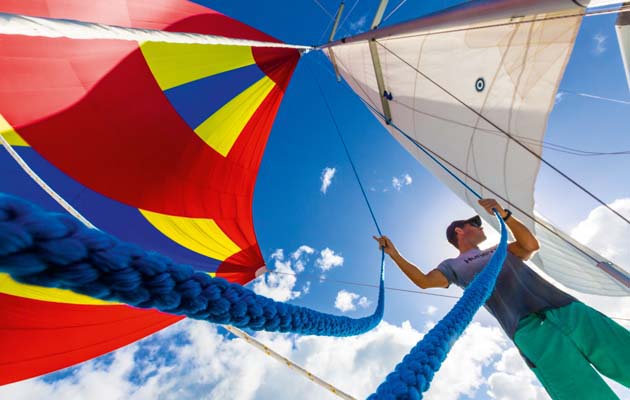
What downwind sails should you have for an Atlantic crossing?
What downwind sails should you buy for an Atlantic crossing or cruising beyond the Caribbean? This is one of the…

Chris Tibbs on a dream Atlantic crossing and a heavenly Caribbean winter
There is only one adjective that adequately describes our transatlantic crossing with the ARC last year and the season of…
When departing the Canaries the prevailing wind direction is from north through to east-north-east. These are the trade winds found on the eastern side of the semi-permanent high pressure which we know as the Azores high. The wind blows from this direction for 55-65% of the time with little variation from November to March. However, averages do not tell us everything and we do get a number of days when the Canaries are affected by low pressure passing close to the north.
Winter winds
This is important for a pleasurable passage; few people enjoy headwinds when supposedly on a downwind passage or race. Near the Canaries the wind is between south and west for around 10% of the time in December and higher at 14% in January. That is not a huge difference and the variability between years makes it hard to make firm predictions.
There are lots of statistics from different sources and although they roughly agree the older pilot charts and routing charts tend to indicate a higher incidence of trade winds, while winds derived from newer satellite observations show more variability.

Harry Scott leaving the Canaries.
When looking at reanalysis data we see an even greater variation in the wind patterns, and this is consistent with a greater variability in the weather which we expect with climate change.
Additionally, if the wind becomes south-westerly, the average strength tends to increase from November and December through to February. This is an indication of deeper winter depressions passing closer to, and affecting the Canary Islands.
On the way across there will remain a small chance of south-westerly winds which decreases the further south and west you get; mid-Atlantic adverse and light winds are generally linked to the tail of cold fronts splitting the Azores high or more rarely areas of low pressure.
When to go?
To compare conditions between months, I ran some weather routing for a late November and an early January departure. This was from the Canaries to St Lucia using 11 years of reanalysis data from 2010-2020 departing in late November and early January. By using the polars from a cruiser-racer production boat some of the results were quite surprising.
The earlier departures gave a greater range of routes with the January departures slightly closer to the direct route and to the south; this reflects the expected stronger winds (from historical data) with shorter courses following closer to the great circle route.
However, the main surprise came with the timings as the late November departures were on average 10 hours faster than the January ones. This didn’t make a great deal of sense because historical data, as well as anecdotal evidence from the Caribbean, suggested the later crossings should have stronger and steadier trade winds.
But by looking at the routes and weather patterns a little more closely, I found that on four of the January routes there was low pressure in the central and eastern Atlantic that was further south than usually expected and impacted on the first part of the route. This gave moderate to strong headwinds and a slow start to the passage which was followed by light winds until the trade winds filled in after the lows had moved away.

An unusually large low in January, completely disturbing the trade winds
So a January passage on a ‘good’ year should, given long term average conditions, be faster with stronger wind particularly on the latter part of the passage. But, rather significantly, there is a greater chance of low pressure affecting the Canary Islands and delaying the start if cruising, or giving a period of beating if racing.
Planning our sailing is rarely as simple as deciding a date on which we are leaving. Something that should be taken equally seriously is the weather expected on the passage to the Canary Islands. This is more important when heading south from the UK and north-west Europe, although it must also be taken into consideration when departing from the Mediterranean.
Head south early
The usual advice is to get south as early as possible, as an easier passage will be had in September rather than leaving it until November or December. If crossing the Bay of Biscay, once into September the likelihood of gales increases, as does the probability of south-westerly winds.
In September pilot charts indicate that gales in northern Biscay are likely 3% of the time, which increases to 7% in October and 9% in November. We also get a significant increase in south-westerly winds; this reflects the passing of lows to the north-west which tend to pass further south during autumn and winter.

Classic tradewind setup for an Atlantic crossing. Photo: TimBisMedia
There are some breaks in the weather as cold fronts rattle through veering the wind to the north-west and occasionally to the north. As the season progresses so does the likelihood that the Portuguese trade winds will fail, giving a beat south down the Portuguese coast only picking up the trade winds south of the latitude of Gibraltar.
As we’ve seen from the start of races from France in the autumn, there can be a high attrition rate before the yachts have even left Biscay. It’s not that you can’t cross Biscay in any month, but the later it’s left the longer the time between weather windows and the shorter the weather windows tend to be. This can lead us to make choices based on necessity rather than prudence.
Once south of Portugal we should get into the start of the trade winds – but we still need to watch for lows further south than normal.
While most yachts arrive in the Canary Islands having had a good sail, there are always a number that get caught out and end up beating for some of the way – usually yachts that have left it late and are on a tight schedule. This is also true for yachts leaving the Mediterranean and it’s not uncommon for yachts to have to wait in Gibraltar for strong westerly winds to diminish.
Whether intending to start your transatlantic in November or wait until later, I prefer to see boats south of Biscay well before the end of September and would not be far behind if leaving from the Med.
A crossing in January will generally have stronger winds, but there’s a greater chance of headwinds particularly when getting away from the Canary Islands. Whenever you decide to cross, getting to the Canaries early is important and the later you leave it to get south the more chance there is of having to wait for a weather window.
If you enjoyed this….
Yachting World is the world’s leading magazine for bluewater cruisers and offshore sailors. Every month we have inspirational adventures and practical features to help you realise your sailing dreams. Build your knowledge with a subscription delivered to your door. See our latest offers and save at least 30% off the cover price.
Forgot your password?
Enter the email address linked with your account and we'll send you a secure link to change your password.
Booking Advisor Form
Fill in the form below and you will soon receive suggestions with the ideal yachts for your trip.
Sleeping guests
Cruising guests
Your form has been submitted successfully!
A travel expert will contact you shortly to suggest the ideal yachts for your trip.
- Booking Advisor
Let a travel expert suggest the ideal yachts for your trip.
Enter the 4-digit confirmation code below:
Code hasn't arrived?
You can retry in .
The code you entered is incorrect. Please try again.
Your email address has not been confirmed yet. Please check your inbox and click on the link that has been sent to you.
- Help Center
- Terms of Service
- Privacy Policy
- Rent a Boat in Greece
- Deciding to list
- Add listing
- About Listing
- Sailing Distance Calculator
- Скидки дня
- Справка и помощь
- Адрес доставки Идет загрузка... Ошибка: повторите попытку ОК
- Продажи
- Список отслеживания Развернуть список отслеживаемых товаров Идет загрузка... Войдите в систему , чтобы просмотреть свои сведения о пользователе
- Краткий обзор
- Недавно просмотренные
- Ставки/предложения
- Список отслеживания
- История покупок
- Купить опять
- Объявления о товарах
- Сохраненные запросы поиска
- Сохраненные продавцы
- Сообщения
- Развернуть корзину Идет загрузка... Произошла ошибка. Чтобы узнать подробнее, посмотрите корзину.
Oops! Looks like we're having trouble connecting to our server.
Refresh your browser window to try again.
Shop the Latest Sneakers
Best sellers.
- Nike Dunk Low Retro White Black 2021
- Jordan 1 KO Syracuse 2022
- Yeezy Boost 700 V1 Mauve
- Jordan 4 SE Black Canvas
- Jordan 1 Retro Low Fragment Design x Travis Scott
Recent Releases
- Jordan 1 High Retro OG White Team Red
- Jordan 1 High Retro OG Summit White Obsidian
- Jordan 3 Retro x J. Balvin Mid Rio
- Jordan 3 Mid Green Glow
- Jordan 2/3 Low White Black
- Yeezy Slide
- Yeezy Foam RNNR
- New Balance
TIME Palmer Johnson Yachts
- Inspiration
TIME has 5 Photos
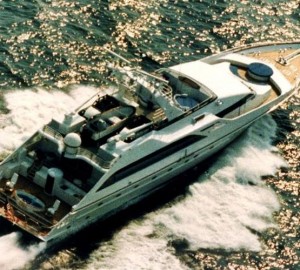
Palmer Johnson News

Save 15% aboard the 144’ charter ...
Similar yachts.
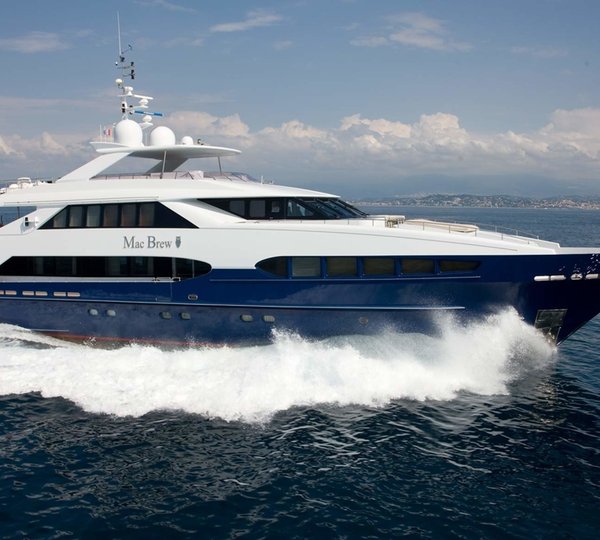
MAC BREW | From EUR€ 125,000/wk
- Yachts >
- All Yachts >
- All Motor Yachts Over 100ft/30m >
If you have any questions about the TIME information page below please contact us .
A Summary of Motor Yacht TIME
The well proportioned superyacht TIME is a motor yacht. This 39 m (126 ft) luxury yacht was created by Palmer Johnson Yachts in 1987. Superyacht TIME is a beautiful yacht that is able to sleep a total of 6 people on board and has approximately 5 crew. The balanced boat has been envisaged by naval architects Tom Fexas. Juan-Carlos Espinosa/Diane Atwood was involved in the interior design and styling.
The New Build & Design for Luxury Yacht TIME
The yacht's general design work came from Tom Fexas. The professional naval architect plans are a creation of Tom Fexas. Motor Yacht TIME received her stylish interior designing from the interior design skills of Juan-Carlos Espinosa/Diane Atwood. Created at Palmer Johnson Yachts this vessel was fabricated in the United States. She was successfully launched in Sturgeon Bay WI in 1987 before being delivered to the owner. Her main hull was crafted from aluminium. The motor yacht superstructure is made extensively using aluminium. With a width of 8.26 metres / 27.1 ft TIME has spacious room. A shallow draught of 1.49m (4.9ft) selects the list of worldwide harbours she can enter, taking into account their specific depth at low tide. She had refit maintenance and alteration work carried out by 1992.
M/Y TIME Engineering & Speeds:
This yacht is driven by twin ample DDC diesel engine(s) and can touch a thrilling maximum limit speed of 31 knots. The engine of the TIME creates 2400 horse power (or 1766 kilowatts). Her total HP is 4800 HP and her total Kilowatts are 3532. Connected to her Ddc engine(s) are twin water jets (kamewa). This yacht’s animated cruise speed is 25 knots which provides a range of 3500.
Superyacht TIME Has The Following Accommodation:
The well proportioned luxury yacht M/Y TIME is able to sleep up to 6 people and has 5 crew members.
A List of the Specifications of the TIME:
| Superyacht Name: | Motor Yacht TIME |
|---|---|
| Built By: | Palmer Johnson Yachts |
| Built in: | Sturgeon Bay WI, United States |
| Launched in: | 1987 |
| Refitted in: | 1992 |
| Length Overall: | 38.5 metres / 126.3 feet. |
| Waterline Length: | 33.68 (110.5 ft) |
| Naval Architecture: | Tom Fexas, Tom Fexas |
| Interior Designers: | Juan-Carlos Espinosa/Diane Atwood |
| Gross Tonnes: | 284 |
| Nett Tonnes: | 85 |
| Displacement: | 123 |
| Hull / Superstructure Construction Material: | aluminium / aluminium |
| Owner of TIME: | Unknown |
| TIME available for luxury yacht charters: | - |
| Is the yacht for sale: | - |
| Helicopter Landing Pad: | No |
| Material Used For Deck: | teak |
| The Country the Yacht is Flagged in: | United States |
| Official registry port is: | Cleveland Oh |
| Home port: | Fort Lauderdale, USA |
| Class society used: | ABS (American Bureau of Shipping) |
| Max yacht charter guests: | 6 |
| Number of Crew Members: | 5 |
| Her Engine(s) is two 2400 HP / 1766 Kilowatts Ddc. Model: | 16V 149TI diesel. |
| Overall output: | 4800 HP /3532 KW. |
| Approximate Cruise Speed is 25 nautical miles per hour. | |
| Top Speed: | 31 nautical miles per hour. |
| Range: | 3500 at a speed of 14 knots. |
| Fuel tanks: | 52990 L. |
| Fresh water: | 8327.00. |
| Power generation: | Cummins 2 times 100 kilowatts. |
| Yacht Beam: | 8.26m/27.1ft. |
| Waterline Length (LWL): | 33.68m/110.5ft. |
| Draught Maximum: | 1.49m/4.9ft. |
Further Information On The Yacht
Her deck material is predominantly a teak deck.
TIME Disclaimer:
The luxury yacht TIME displayed on this page is merely informational and she is not necessarily available for yacht charter or for sale, nor is she represented or marketed in anyway by CharterWorld. This web page and the superyacht information contained herein is not contractual. All yacht specifications and informations are displayed in good faith but CharterWorld does not warrant or assume any legal liability or responsibility for the current accuracy, completeness, validity, or usefulness of any superyacht information and/or images displayed. All boat information is subject to change without prior notice and may not be current.
Quick Enquiry
"Palmer Johnson’s history of building the world’s most innovative yachts has been combined with Bugatti’s signature engineering traits such as the accentuated centre line, perfect symmetry and a sweeping signature curve. PJ traits such as using advanced materials like carbon and a revolutionary hull have been incorporated seamlessly into this yacht design that is quite simply like no other. A masterful and intuitive blend of design, technology and performance. Unique as a class of Superyacht, a fusion of extremes. An iconic design. The original and best." - Palmer Johnson
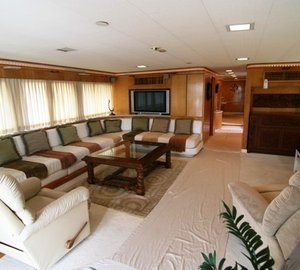
SWEET ESCAPE | From US$ 115,000/wk
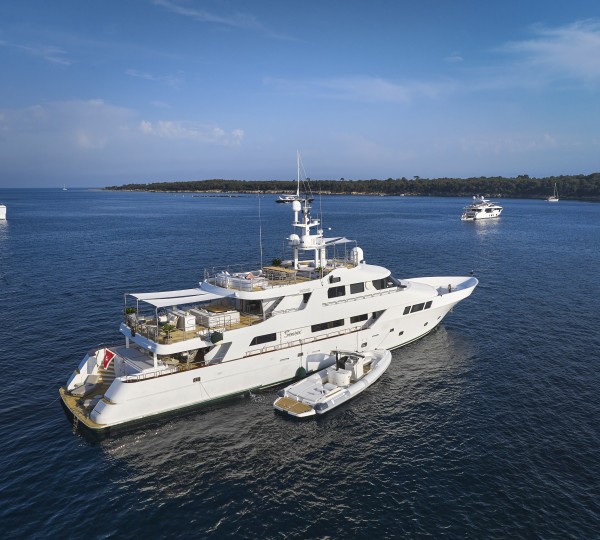
SENSEI | From EUR€ 100,000/wk
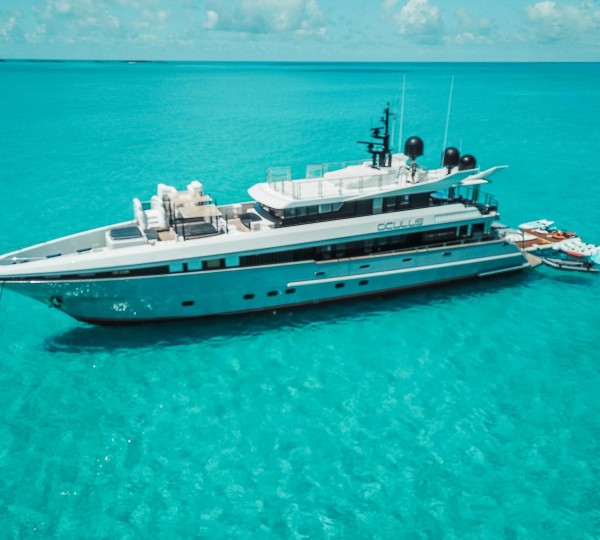
OCULUS | From US$ 99,000/wk
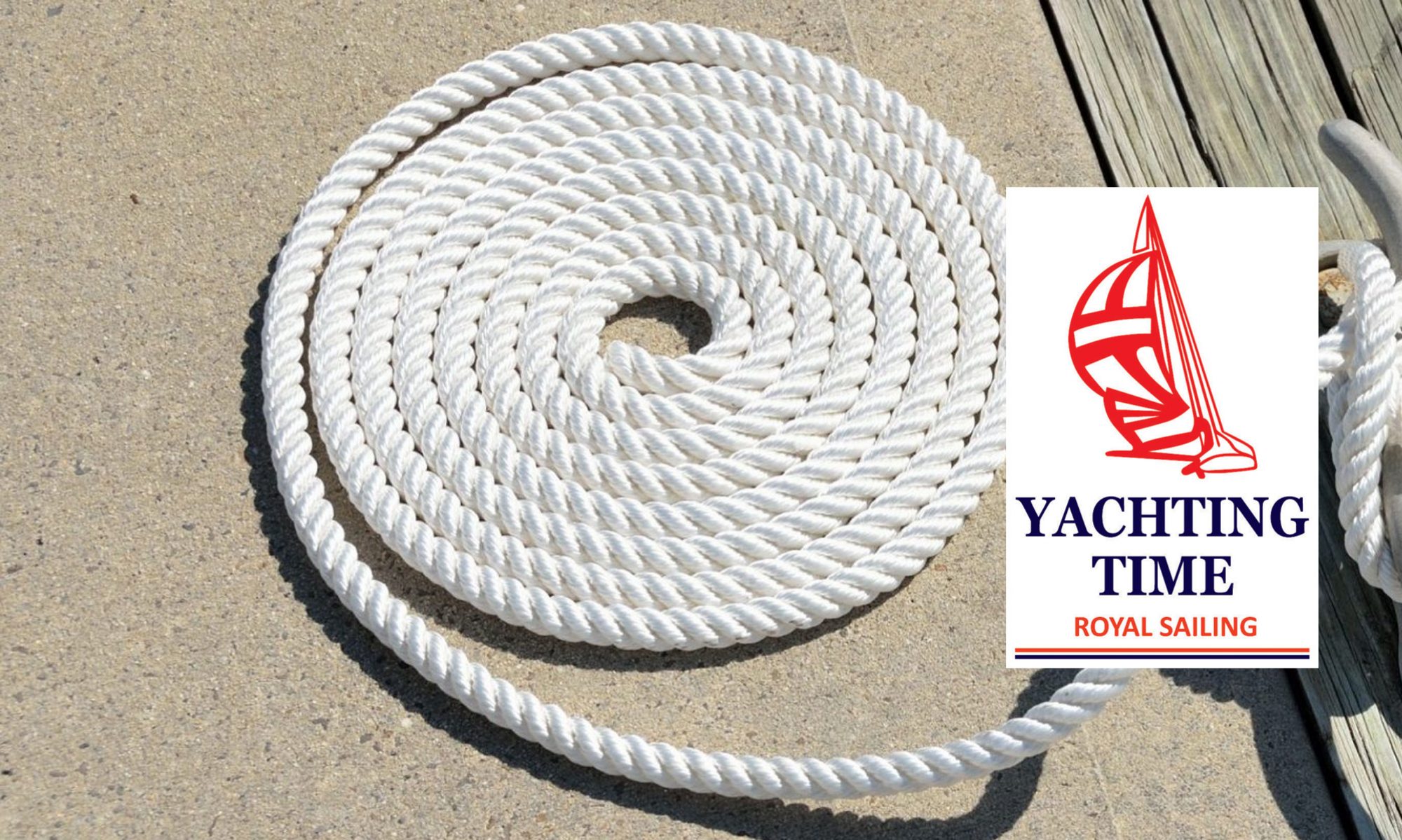
Hrvatski brand
Majce, hlače i još mnogo više…
YACHTING TIME
U asortimanu hrvatskog branda YACHTING TIME možete pronaći veliki izbor odjeće za muškarce i žene.
https://alive-story.com/v/4DpO9TicxcTMnITrFwenng

Please use a modern browser to view this website. Some elements might not work as expected when using Internet Explorer.
- Landing Page
- Luxury Yacht Vacation Types
- Corporate Yacht Charter
- Tailor Made Vacations
- Luxury Exploration Vacations
- View All 3697
- Motor Yachts
- Sailing Yachts
- Classic Yachts
- Catamaran Yachts
- Filter By Destination
- More Filters
- Latest Reviews
- Charter Special Offers
- Destination Guides
- Inspiration & Features
- Mediterranean Charter Yachts
- France Charter Yachts
- Italy Charter Yachts
- Croatia Charter Yachts
- Greece Charter Yachts
- Turkey Charter Yachts
- Bahamas Charter Yachts
- Caribbean Charter Yachts
- Australia Charter Yachts
- Thailand Charter Yachts
- Dubai Charter Yachts
- Destination News
- New To Fleet
- Charter Fleet Updates
- Special Offers
- Industry News
- Yacht Shows
- Corporate Charter
- Finding a Yacht Broker
- Charter Preferences
- Questions & Answers
- Add my yacht
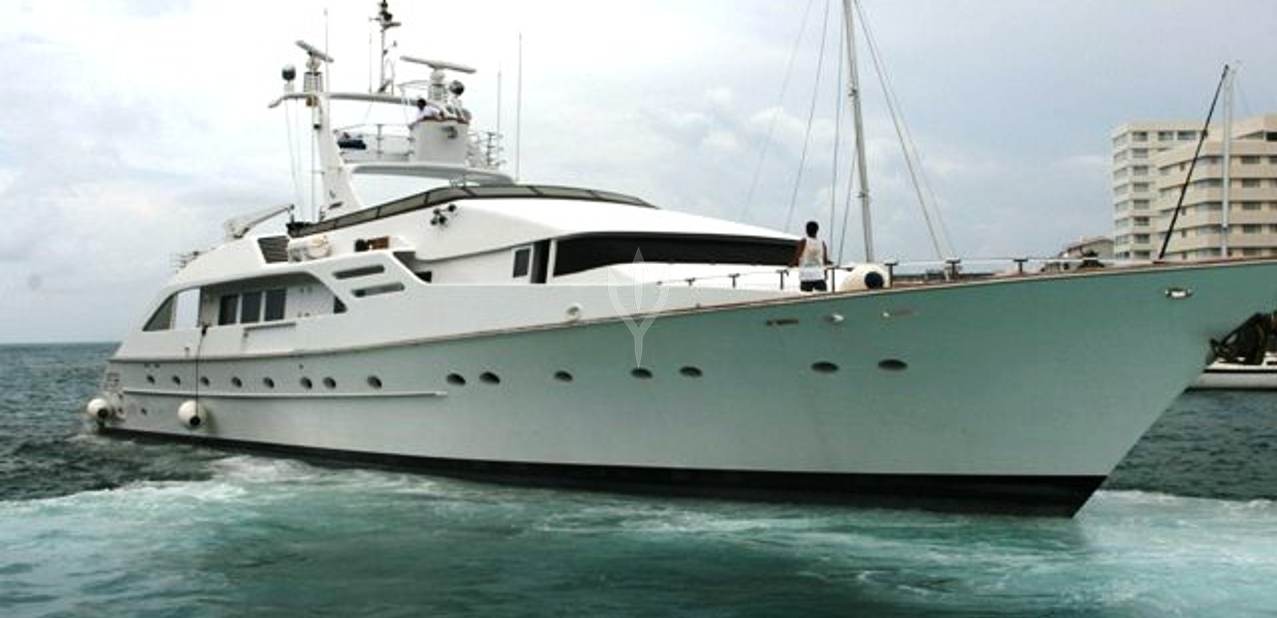
NOT FOR CHARTER *
This Yacht is not for Charter*
SIMILAR YACHTS FOR CHARTER
View Similar Yachts
Or View All luxury yachts for charter
- Luxury Charter Yachts
- Motor Yachts for Charter
- Amenities & Toys
TIME yacht NOT for charter*
38.1m / 125' | palmer johnson | 1987 / 1992.
Owner & Guests
Cabin Configuration
- Previous Yacht
Special Features:
- Impressive 3,500nm range
- ABS (American Bureau of Shipping) classification
- Interior design from Espinosa Yacht Design
- Cruising speed of 25 knots
- Sleeps 6 overnight
The 38.1m/125' motor yacht 'Time' was built by Palmer Johnson in Monaco at their Sturgeon Bay, WI shipyard. Her interior is styled by American designer design house Espinosa Yacht Design and she was completed in 1987. This luxury vessel's exterior design is the work of Tom Fexas Yacht Design and she was last refitted in 1992.
Guest Accommodation
Time has been designed to comfortably accommodate up to 6 guests in 3 suites. She is also capable of carrying up to 5 crew onboard to ensure a relaxed luxury yacht experience.
Range & Performance
Built with a aluminium hull and aluminium superstructure, with teak decks, she has impressive speed and great efficiency thanks to her planing hull. Powered by twin diesel Detroit Diesel (16V149TI) 4,800hp engines, she comfortably cruises at 25 knots, reaches a maximum speed of 31 knots with a range of up to 3,500 nautical miles from her 52,990 litre fuel tanks at 14 knots. Her low draft of 1.7m/5'7" makes her primed for accessing shallow areas and cruising close to the shorelines. Her water tanks store around 8,327 Litres of fresh water. She was built to ABS (American Bureau of Shipping) classification society rules.
| Length | 38.1m / 125' |
| Beam | 7.9m / 25'11 |
| Draft | 1.7m / 5'7 |
| Gross Tonnage | 284 GT |
| Cruising Speed | 25 Knots |
| Built | | (Refitted) |
| Builder | Palmer Johnson |
| Model | Custom |
| Exterior Designer | Tom Fexas Yacht Design |
| Interior Design | Espinosa Yacht Design |
*Charter Time Motor Yacht
Motor yacht Time is currently not believed to be available for private Charter. To view similar yachts for charter , or contact your Yacht Charter Broker for information about renting a luxury charter yacht.
Time Yacht Owner, Captain or marketing company
'Yacht Charter Fleet' is a free information service, if your yacht is available for charter please contact us with details and photos and we will update our records.
Time Photos

NOTE to U.S. Customs & Border Protection
Specification
M/Y Time
| Length | 38.1m / 125' |
| Builder | |
| Exterior Designer | Tom Fexas Yacht Design |
| Interior Design | Espinosa Yacht Design |
| Built | Refit | 1987 | 1992 |
| Model | |
| Beam | 7.9m / 25'11 |
| Gross Tonnage | 284 GT |
| Draft | 1.7m / 5'7 |
| Cruising Speed | 25 Knots |
| Top Speed | 31 Knots |
SIMILAR LUXURY YACHTS FOR CHARTER
Here are a selection of superyachts which are similar to Time yacht which are believed to be available for charter. To view all similar luxury charter yachts click on the button below.
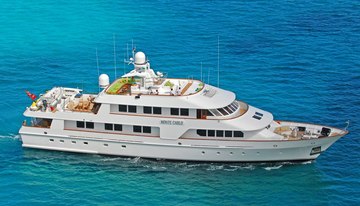
Monte Carlo
40m | Amels
from $54,000 p/week ♦︎
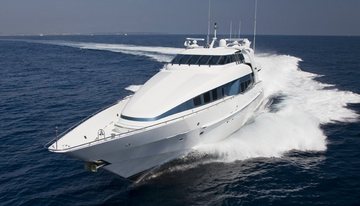
36m | Norship
from $34,000 p/week ♦︎
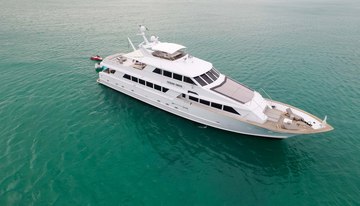
Ocean Drive
38m | Broward
from $49,000 p/week
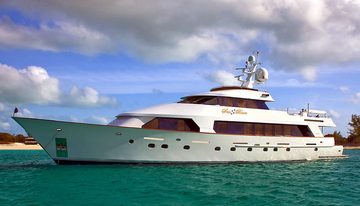
38m | Christensen
POA ♦︎
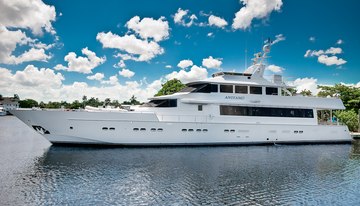
37m | Azimut
from $45,000 p/week
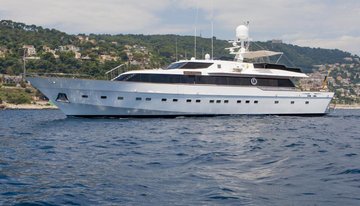
Atlantic Endeavour
34m | W.A. Souter & Sons
from $44,000 p/week ♦︎
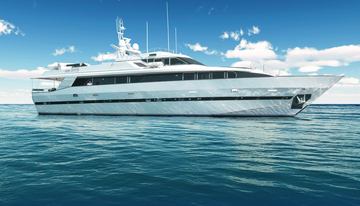
34m | Azimut
from $43,000 p/week ♦︎
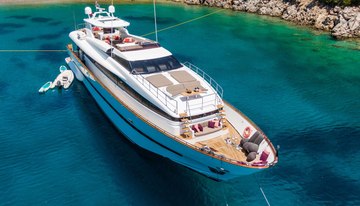
34m | Eurocraft Cantieri Navali
from $61,000 p/week ♦︎

Cheetah Moon
39m | Cantieri Navali Nicolini
from $72,000 p/week ♦︎
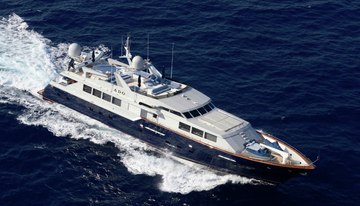
37m | Broward
from $60,000 p/week

35m | Lloyds Ships
from $70,000 p/week
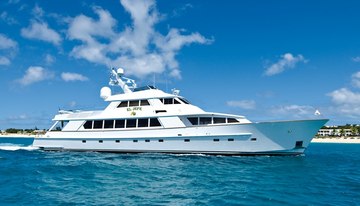
35m | Derecktor Shipyards
from $39,900 p/week
As Featured In
The YachtCharterFleet Difference
YachtCharterFleet makes it easy to find the yacht charter vacation that is right for you. We combine thousands of yacht listings with local destination information, sample itineraries and experiences to deliver the world's most comprehensive yacht charter website.
San Francisco
- Like us on Facebook
- Follow us on Twitter
- Follow us on Instagram
- Find us on LinkedIn
- Add My Yacht
- Affiliates & Partners
Popular Destinations & Events
- St Tropez Yacht Charter
- Monaco Yacht Charter
- St Barts Yacht Charter
- Greece Yacht Charter
- Mykonos Yacht Charter
- Caribbean Yacht Charter
Featured Charter Yachts
- Maltese Falcon Yacht Charter
- Wheels Yacht Charter
- Victorious Yacht Charter
- Andrea Yacht Charter
- Titania Yacht Charter
- Ahpo Yacht Charter
Receive our latest offers, trends and stories direct to your inbox.
Please enter a valid e-mail.
Thanks for subscribing.
Search for Yachts, Destinations, Events, News... everything related to Luxury Yachts for Charter.
Yachts in your shortlist

IMAGES
COMMENTS
This year marks Yachting Times Magazine's 14th anniversary. Fourteen years of bringing you America's only bilingual boating & yachting lifestyle magazine, an absolutely amazing voyage.
Superyacht Times is the authority in yachting. News, yachts for sale and yachts for charter, destinations and yachting intelligence.
We take a look at 15 of the best sailing watches available with functions for racing and cruising sailors, including 3 new models for 2022
Yacht timers - also referred to as regatta timers, yachting chronographs, or sailing watches - are watches specially designed and made for the countdown to the start of a sailing race. As you can imagine, starting a race on water, with entrants powered by the wind, is not as easy as lining up on a grid, Formula 1 style, or lined up like ...
SuperYacht Times is the authority in yachting. News, yachts for sale & charter and superyacht intelligence.
Brian Trautman's 14-year sailing adventure aboard SV Delos has grown to include a family and a livelihood. Trautman initially thought his cruising adventure would be for less than two years ...
Singlehanded sailing is often something we associate with feats of adventure and endurance, bringing forward ideas of the lone sailor heading off across oceans. Setting off on a significant offshore voyage on your own is a truly specialist activity. You are likely to experience sleep deprivation, the stresses of being alone for long periods of ...
Members of the Italian fire and rescue services carry diving cylinders along the quayside during search operations for the luxury yacht Bayesian, in Porticello, Italy, on Thursday, Aug. 22, 2024.
Yachting is a popular and luxurious activity enjoyed by many around the world. The history of yachting dates back to ancient times, and over the centuries, it has evolved into the modern-day sport and pastime that we know today. In this article, we will take a closer look at the history of yachting and how it has evolved over the years. Ancient Times Yachting can be traced back to ancient ...
10 important things to know when going on a sailing holiday - what to pack, how to behave, what to eat and what to expect from the voyage itself.
The yacht, built in 2008 by the Italian firm Perini Navi, can accommodate up to 12 guests in six suites and a crew of 10, according to online specialist yacht sites. It was last refitted in 2020.
New to yachting? Discover everything you need to know, including booking and terms, in this complete beginner's yachting guide.
As bodies were recovered, the authorities and experts wondered how a $40 million, stable and secure vessel could have sunk so quickly. By Emma Bubola and Michael J. de la Merced Emma Bubola ...
The Bayesian yacht was sunk by a sudden and powerful storm in the early hours of Monday morning. ... The vessel disappeared beneath the water at about 05:00 local time (04:00 BST).
Explore the highs and lows of Living on a Yacht in our comprehensive guide, covering everything from cost to lifestyle adjustments.
We're keeping you in touch with the sailing spirit. Since 1894, we've been a vessel for adventure, innovation, and inspiring stories via our magazine and beyond.
The world of yachting is exciting and innovative, but it can be hard to find a news source that is both trustworthy and entertaining. This is SuperYacht Times. Where superyacht enthusiasts all ...
Before his death, New York City attorney Christopher Morvillo was looking forward to finally getting some time to relax and spend more time with his family, a former colleague and friend tells PEOPLE.
Prosecutor Raffaele Cammarano, left, and the chief of the public prosecutor's office of Termini Imerese, Ambrogio Cartosio, give a news conference on Saturday.
When it comes to an Atlantic crossing there are clearly defined weather windows. But how flexible can you be and what challenges are you like to face?
A number of luxury watch brands sponsor sailing teams and events; some have even developed timepieces specifically suited for competitive sailing, often incorporating some version of the all-important regatta countdown function. Here we run down seven yachting and regatta watches and reveal why they
Calculate the total nautical distance of your sea voyage with ease. Sailing Distance Calculating Tool with support for multiple locations.
The 56-meter (184 feet) sailing boat, called "The Bayesian," was hit by a violent storm around 4 a.m. local time Monday with 10 crew and 12 passengers on board.
STEELING TIME is a 31m luxury motor super yacht available for charter built in 1996, refitted in 2023. Charter up to 10 guests in 4 cabins with a crew of 4.
Condition is Pre-owned. This jacket is like new, no pilling, no stains, the zipper is present and function as intended. Length: (Top of Collar to Hem): 27".
The well proportioned superyacht TIME is a motor yacht. This 39 m (126 ft) luxury yacht was created by Palmer Johnson Yachts in 1987. Superyacht TIME is a beautiful yacht that is able to sleep a total of 6 people on board and has approximately 5 crew. The balanced boat has been envisaged by naval architects Tom Fexas.
YACHTING TIME U asortimanu hrvatskog branda YACHTING TIME možete pronaći veliki izbor odjeće za muškarce i žene. Yachtingtime - Hrvatski brand - veleprodaja tekstila
TIME is a 38m luxury motor super yacht built in 1987, refitted in 1992 by Palmer Johnson Yachts. View similar yachts for Charter around the world
TIME is a 38.5m superyacht built by Palmer Johnson in United States of America and delivered in 1987. Explore her photos and specifications here.
Start to plan the beginning of the boating season in Croatia even today. Charter yacht Bavaria 36 in a very favorable price is already at your fingertips. Below... 1,596.00€ YACHT CHARTER FRANCE March 19, 2013